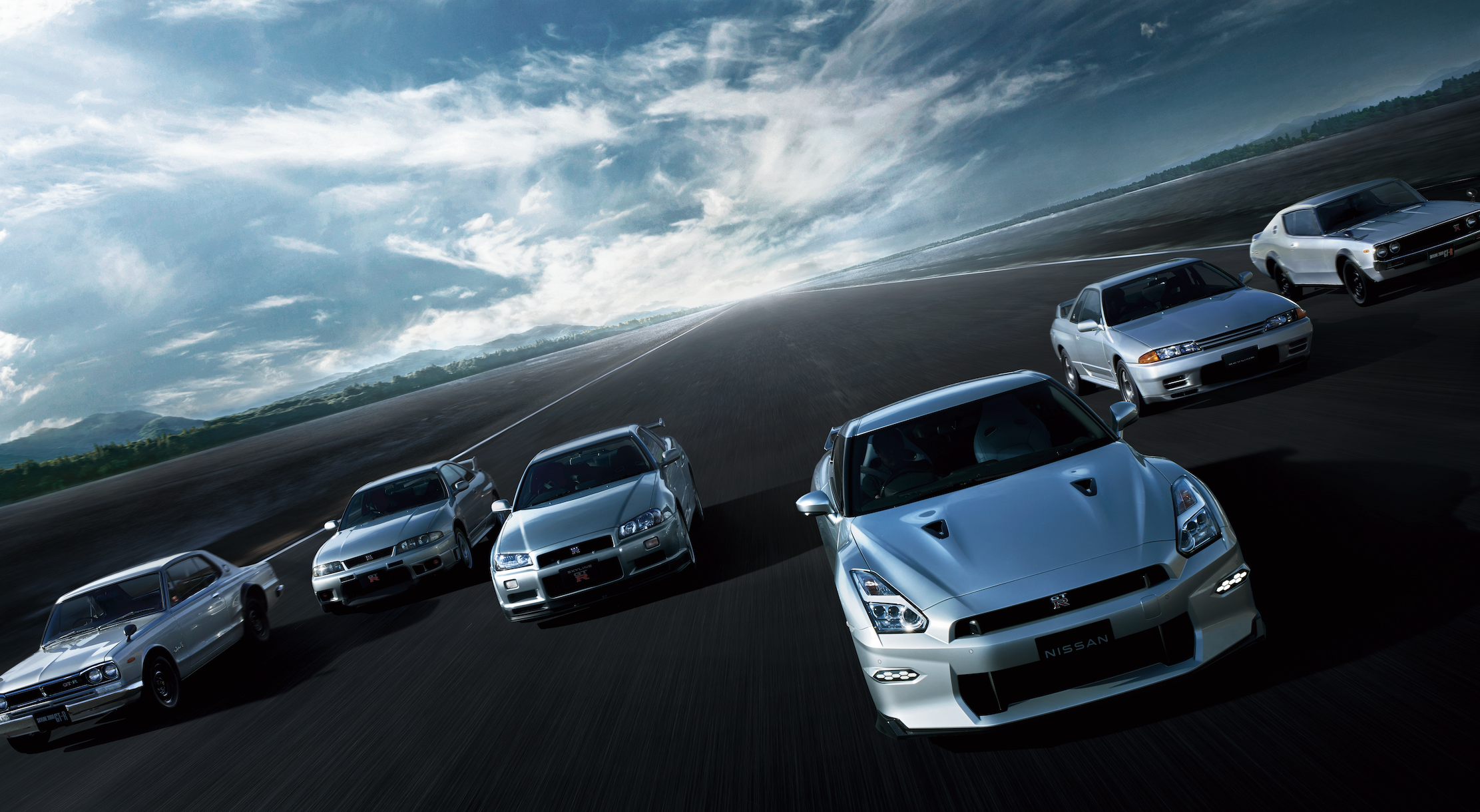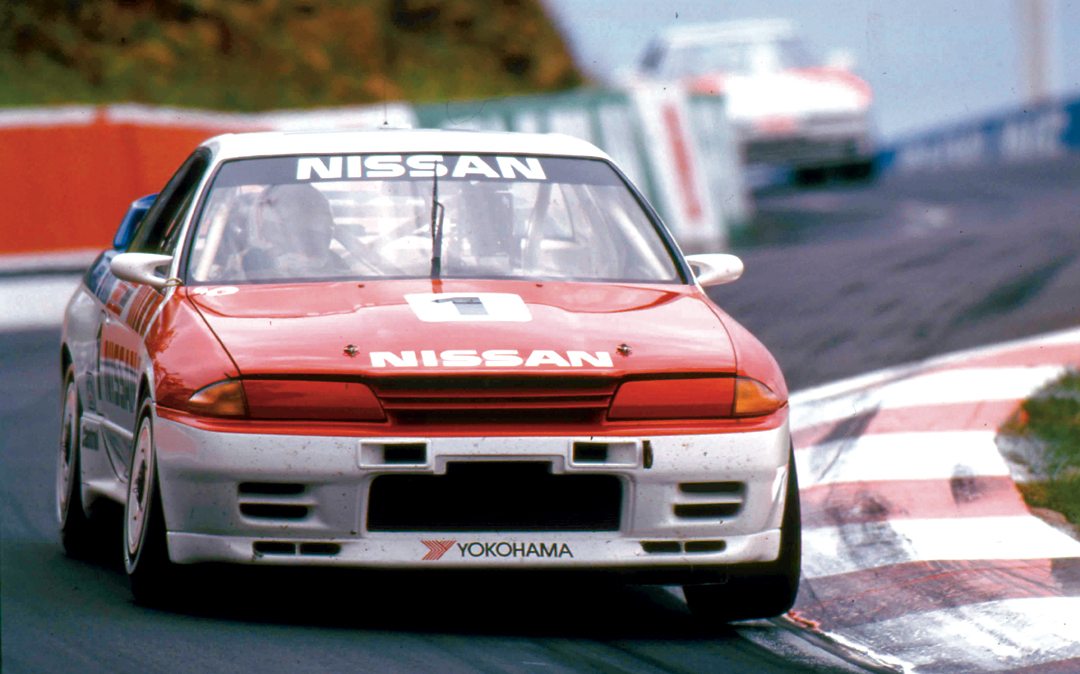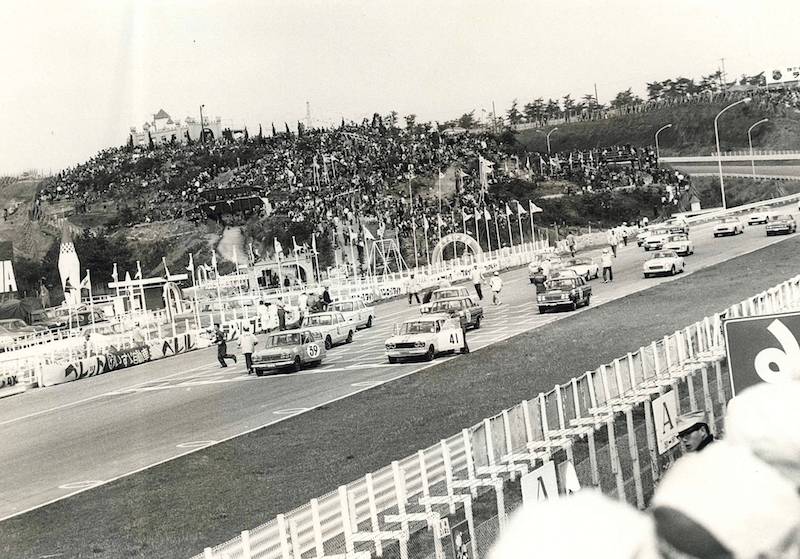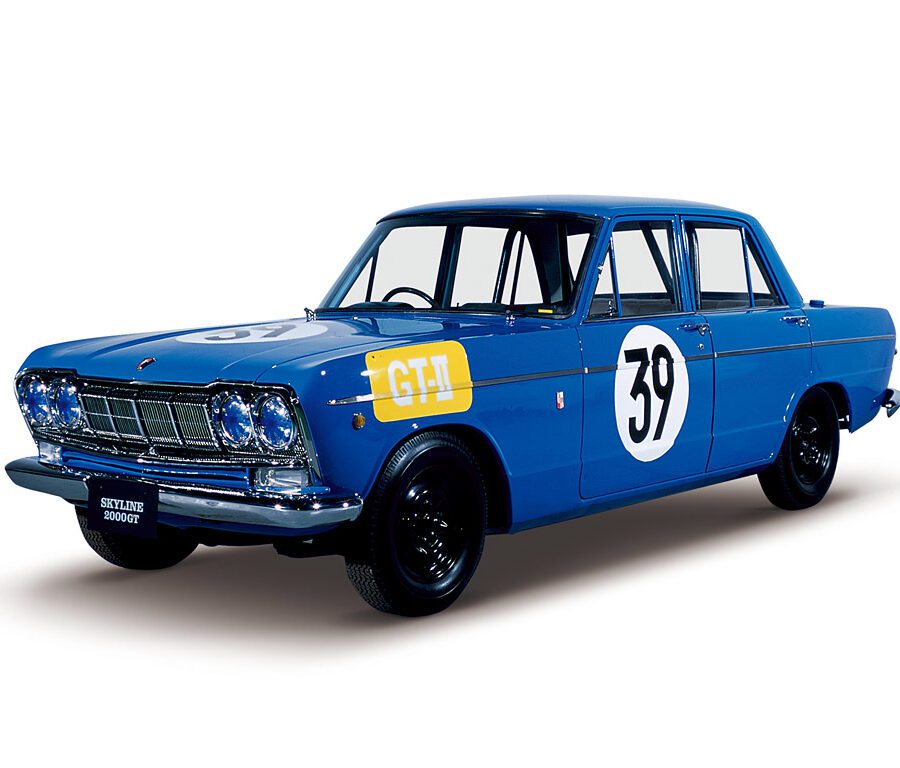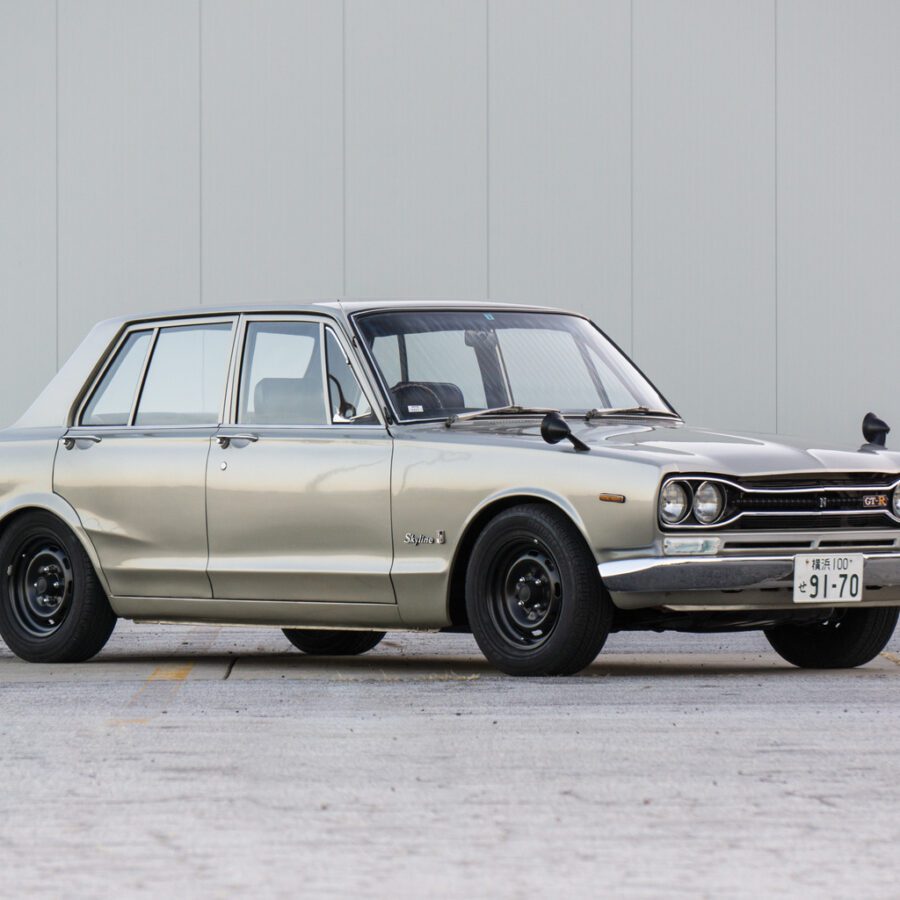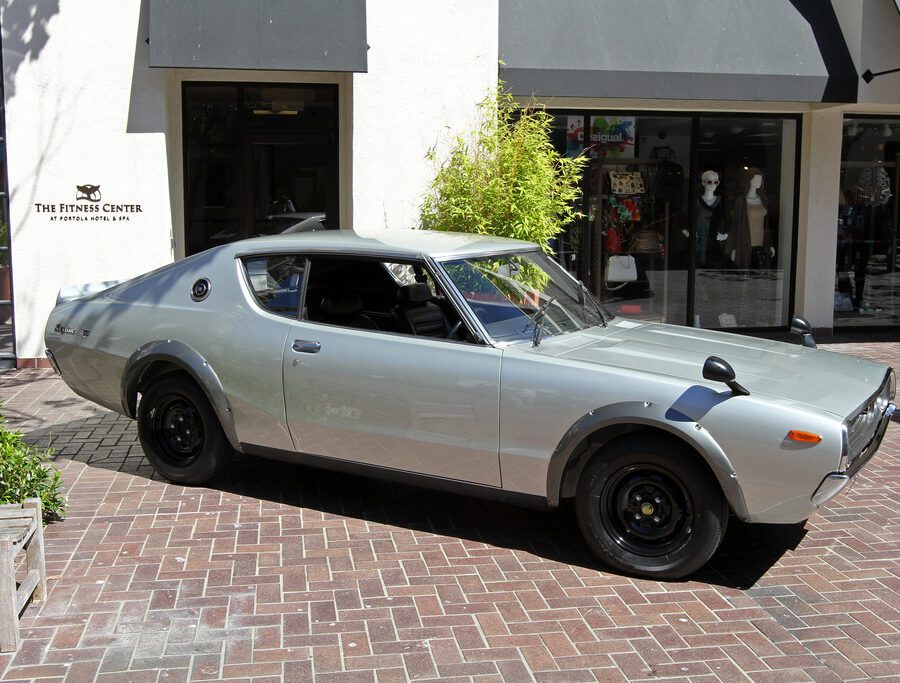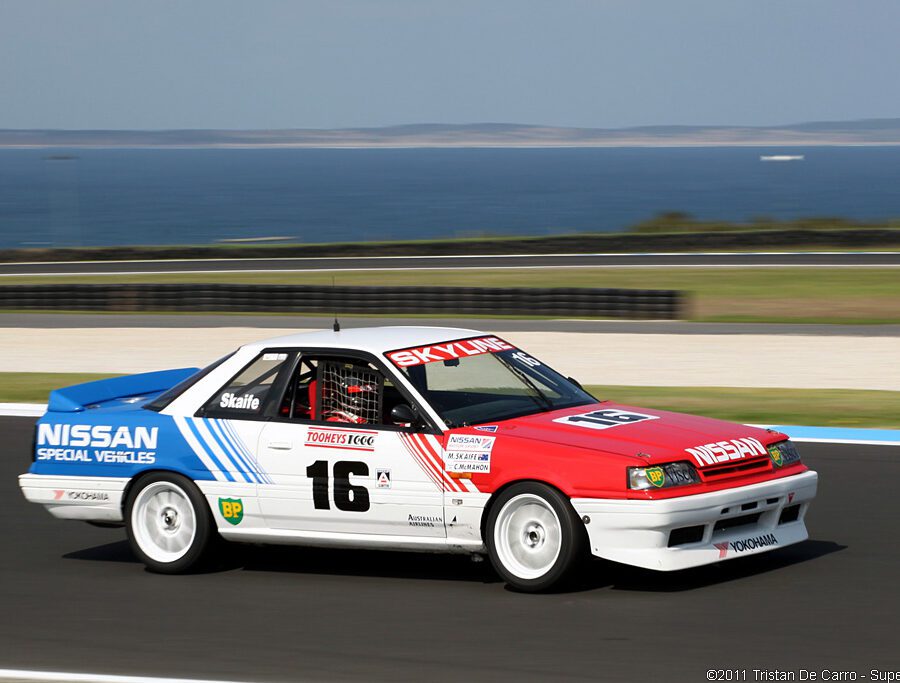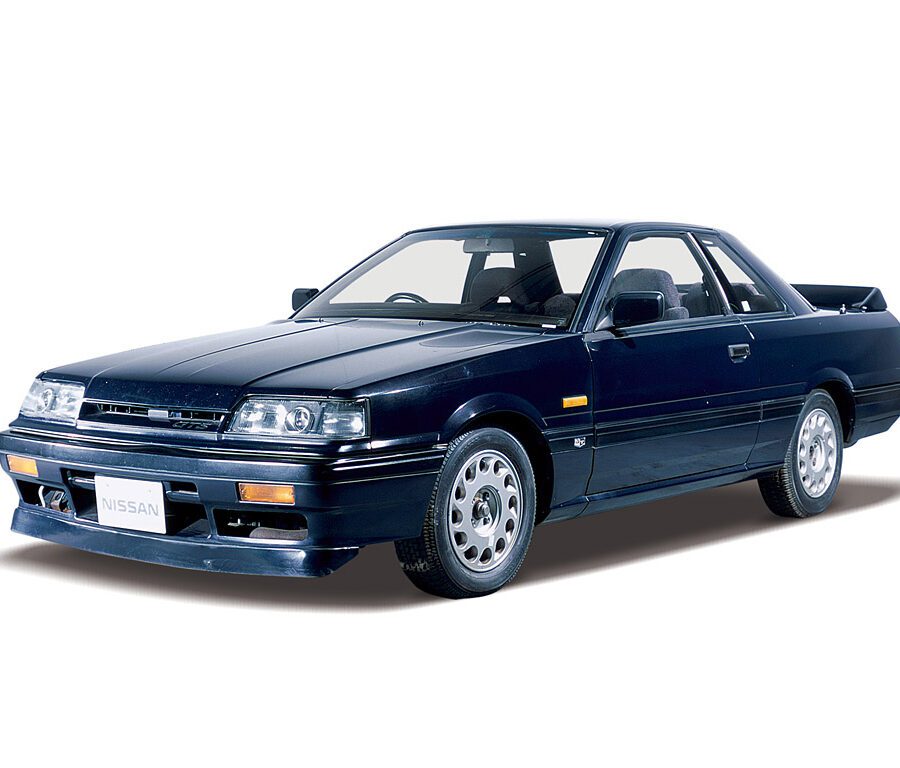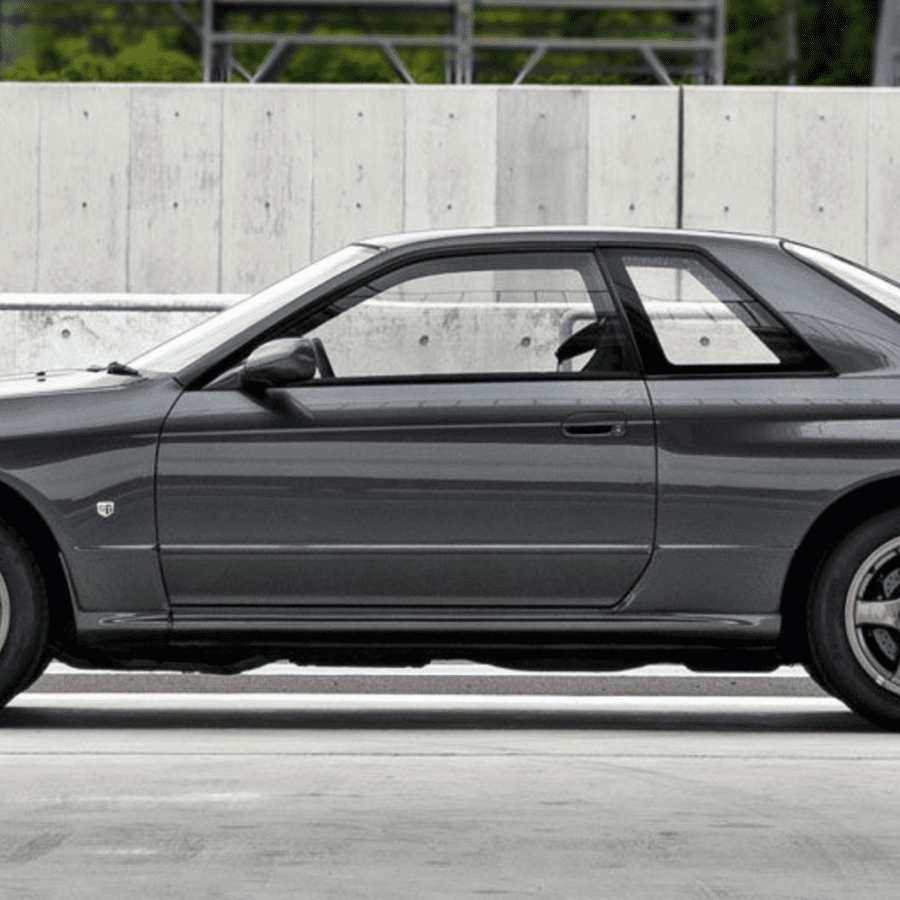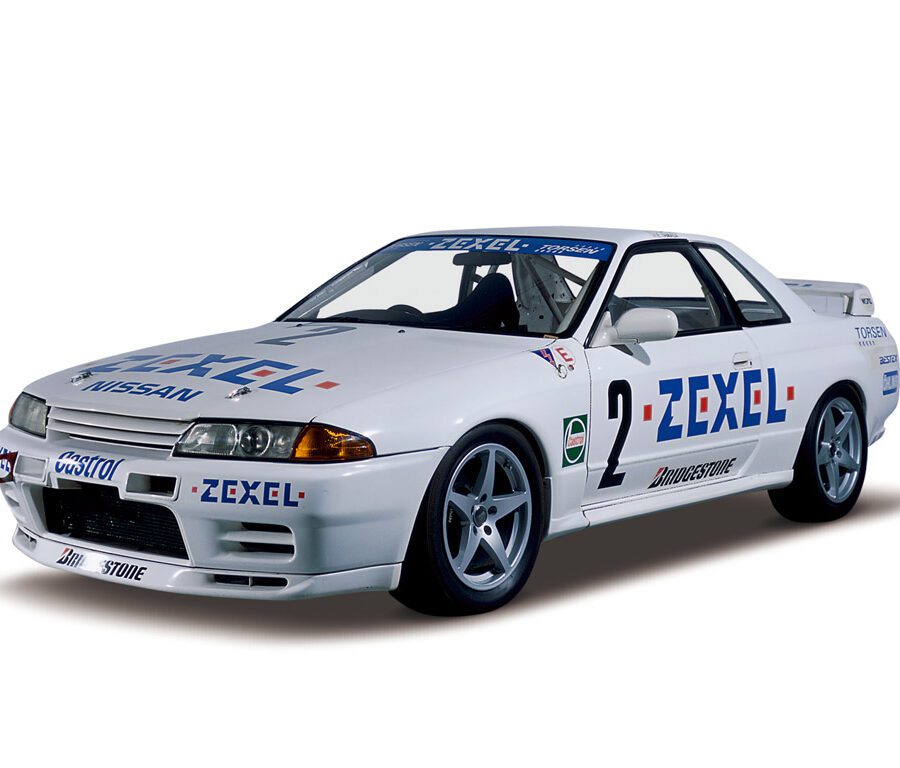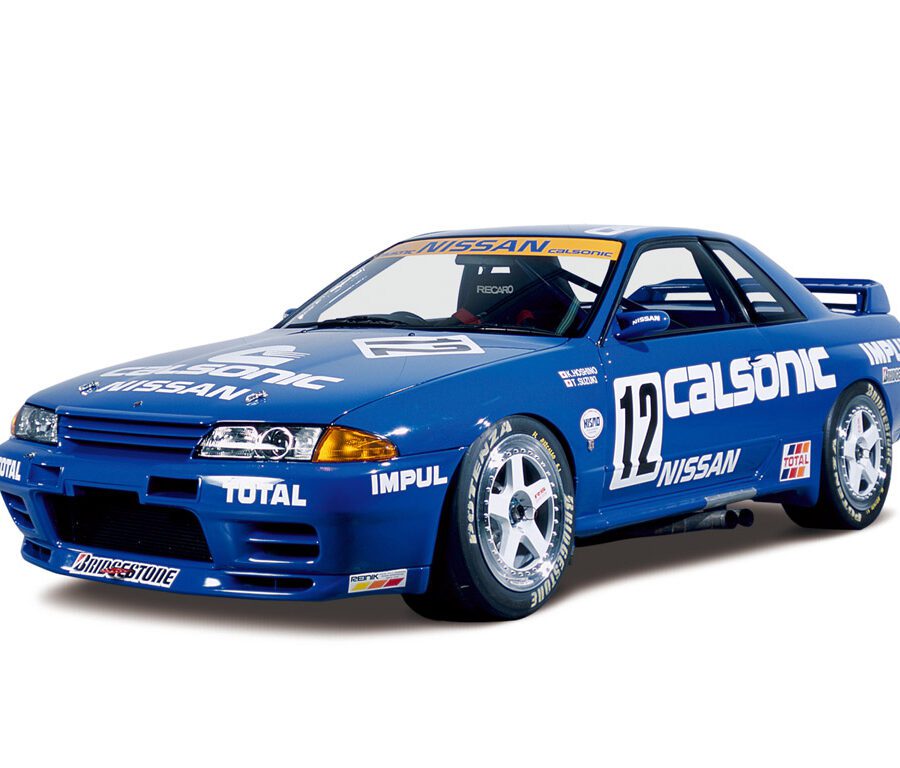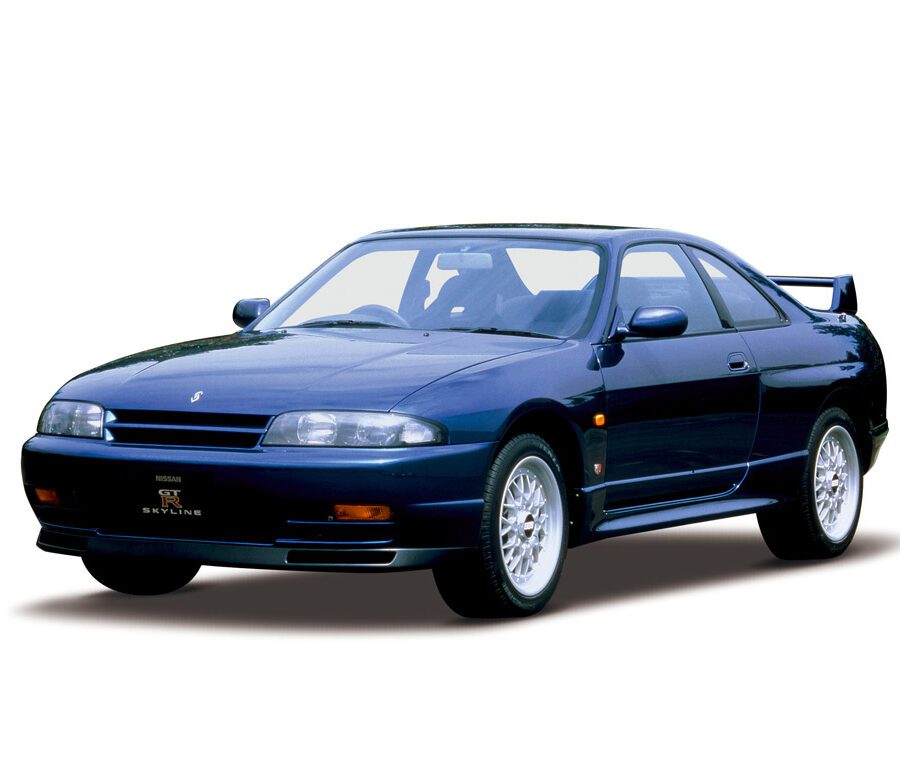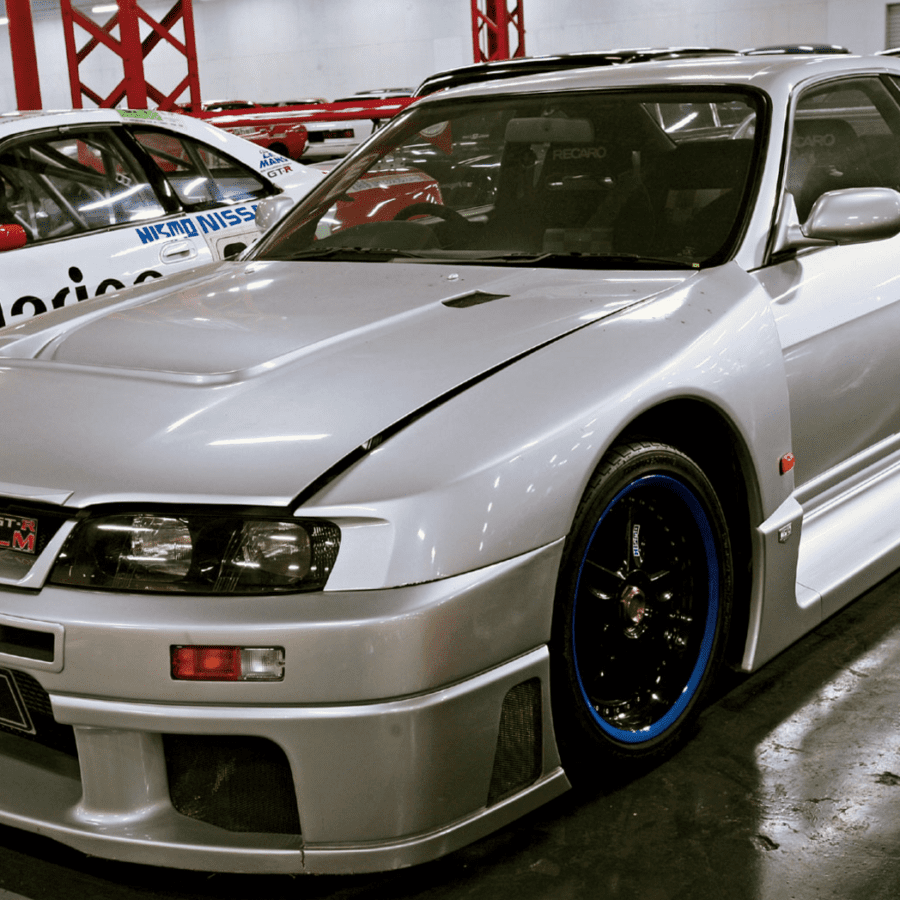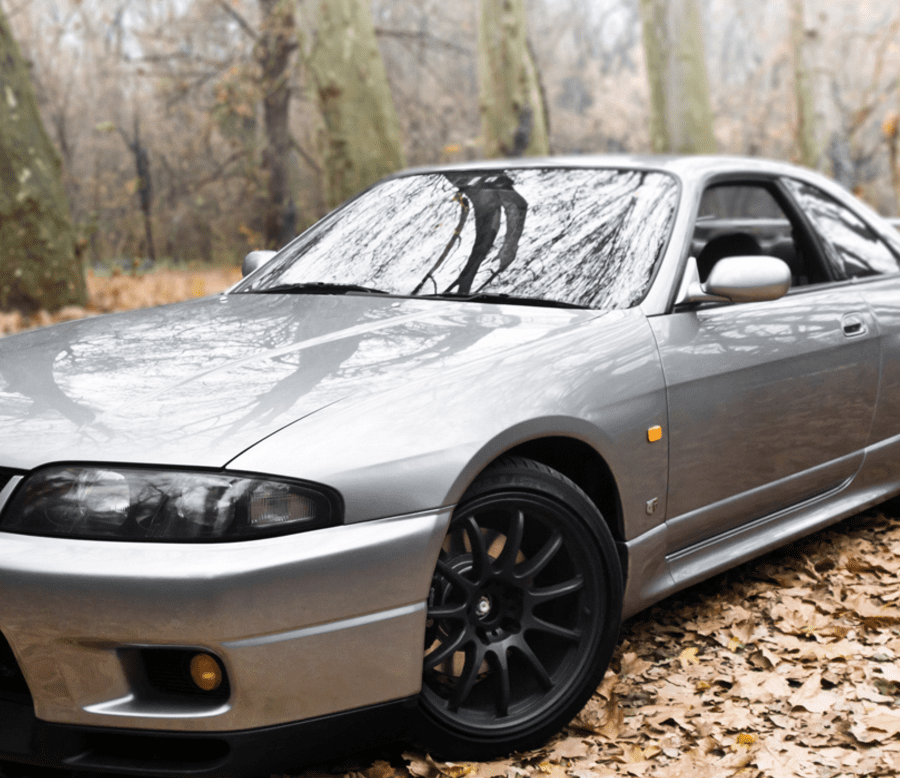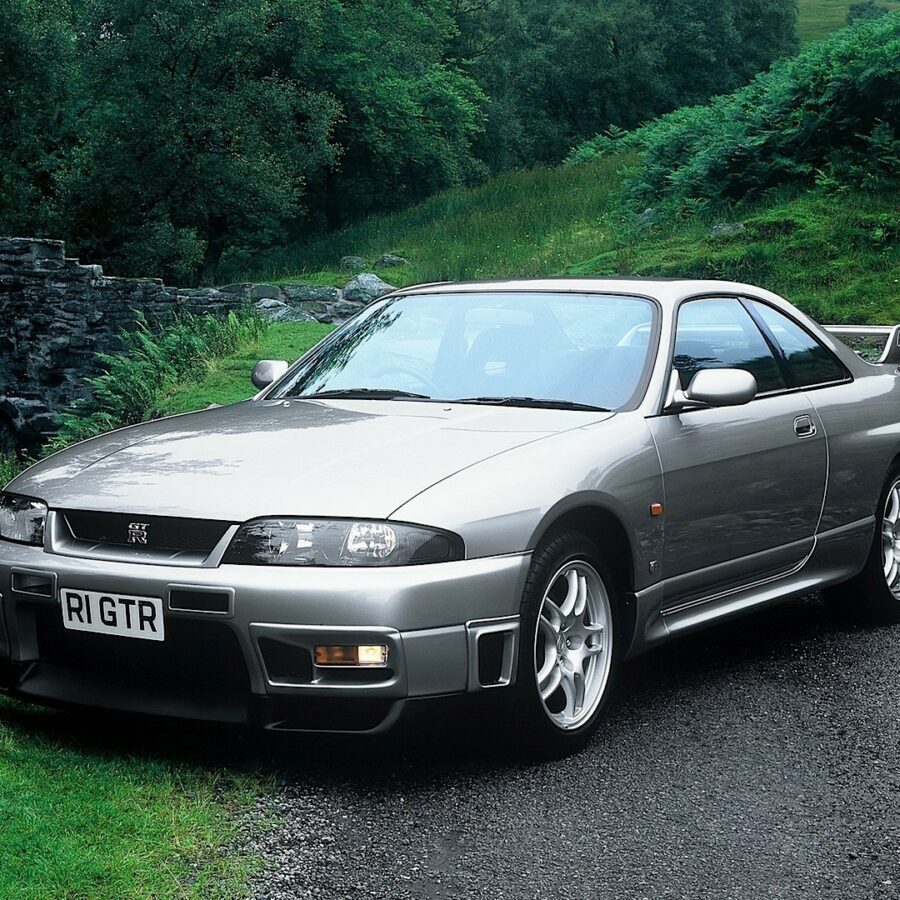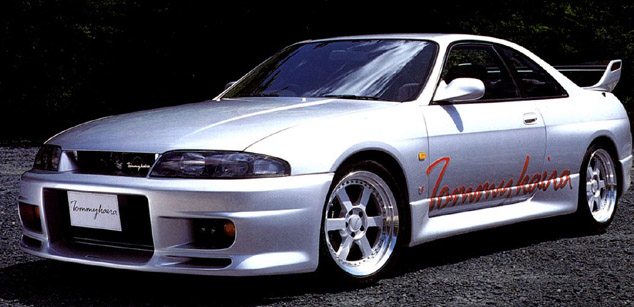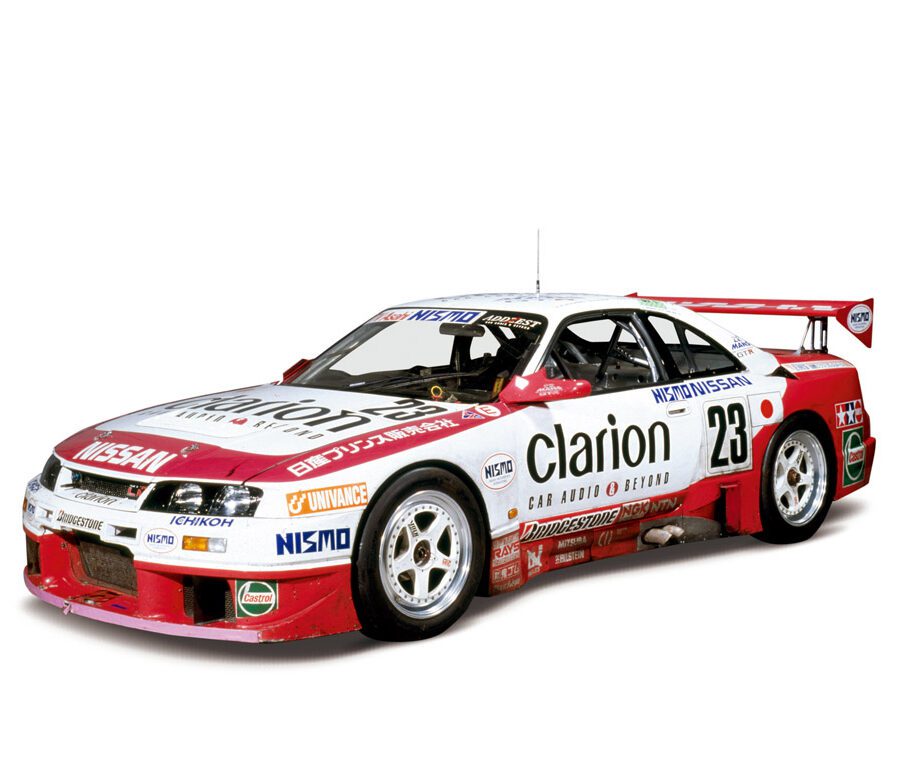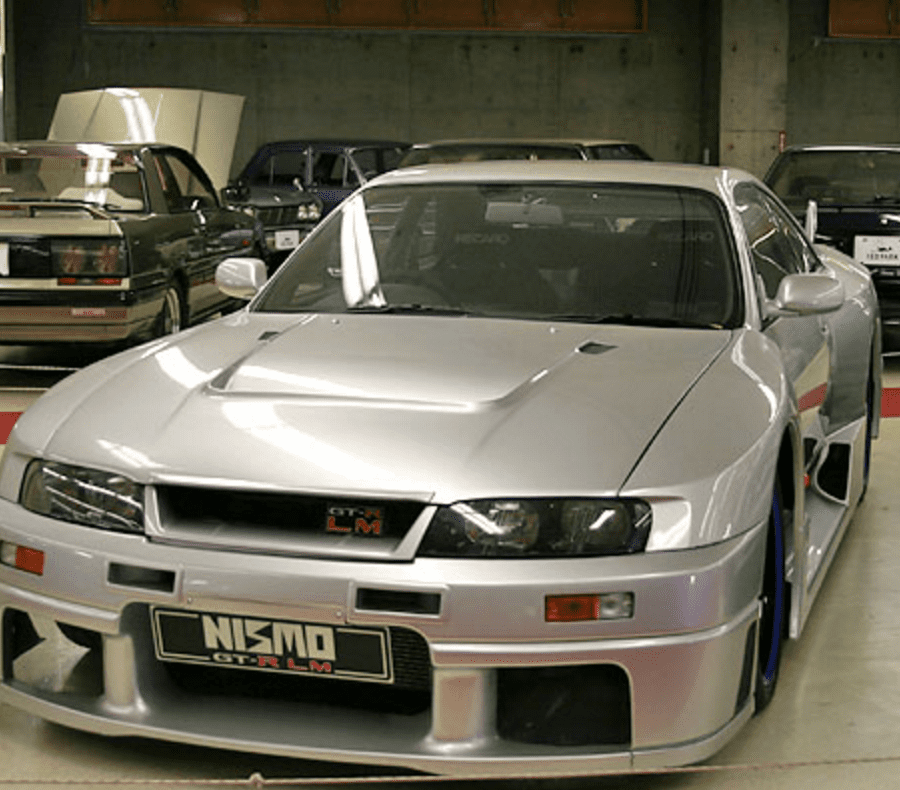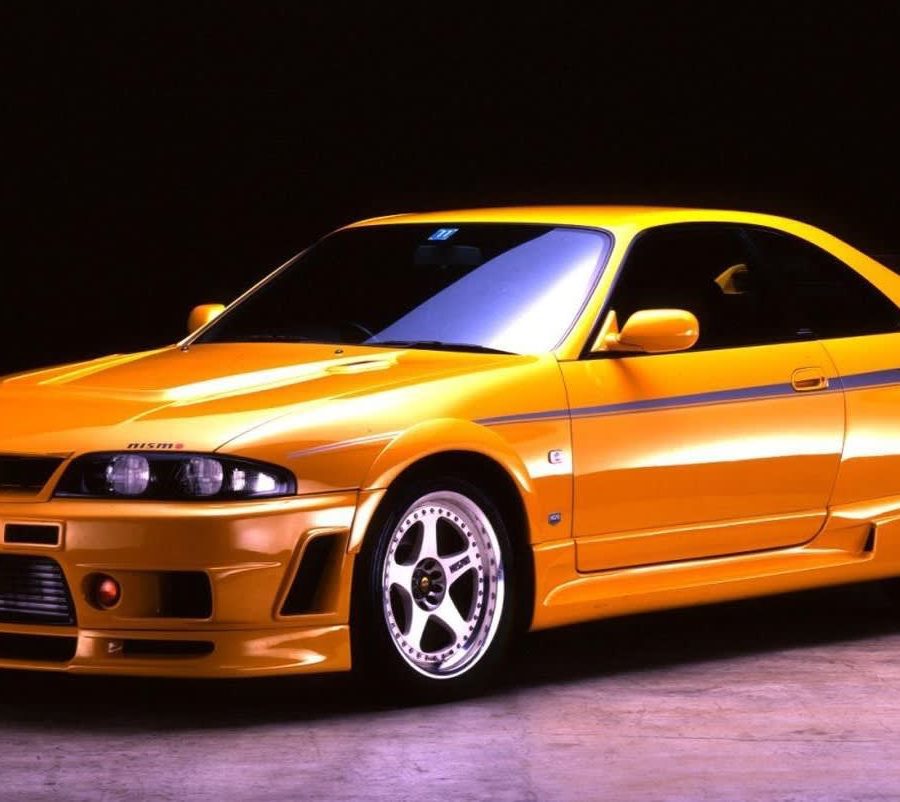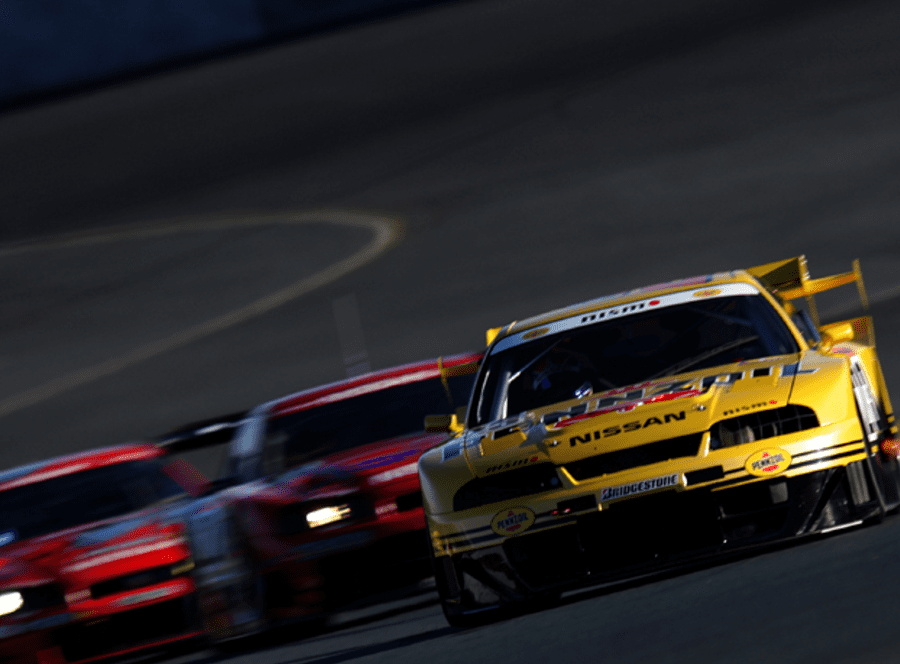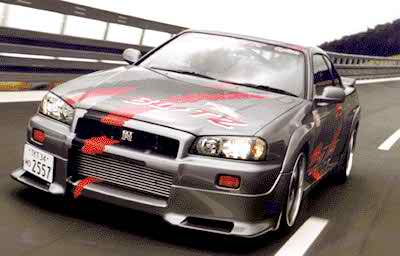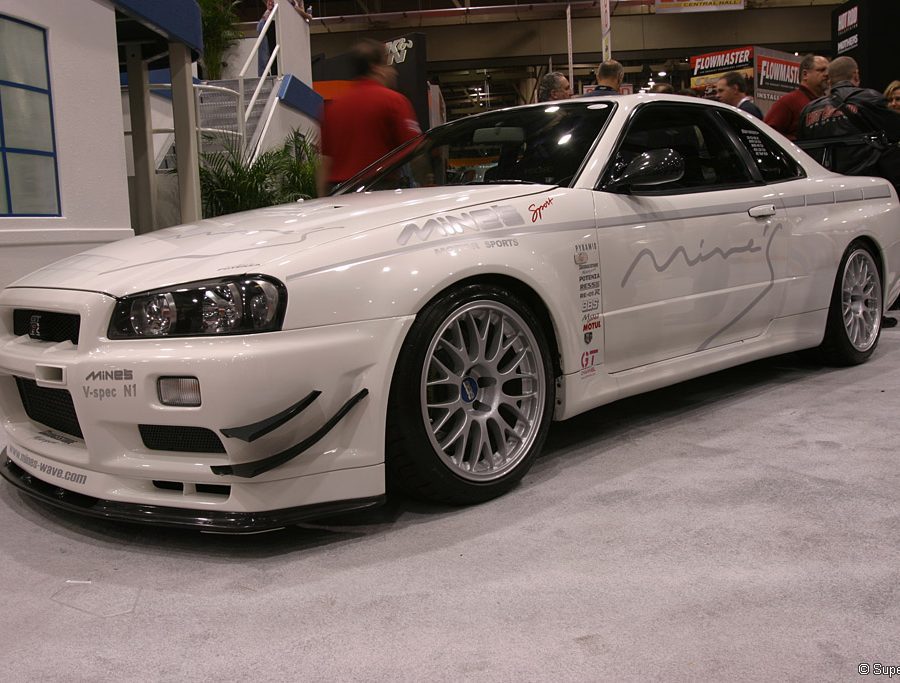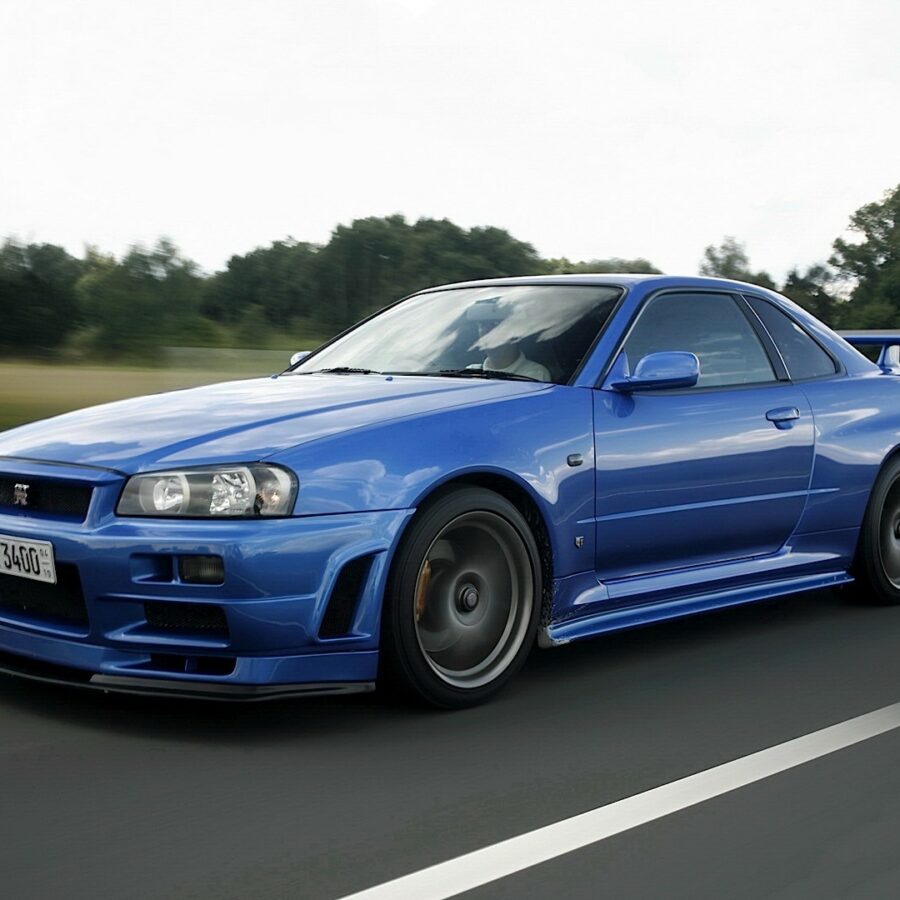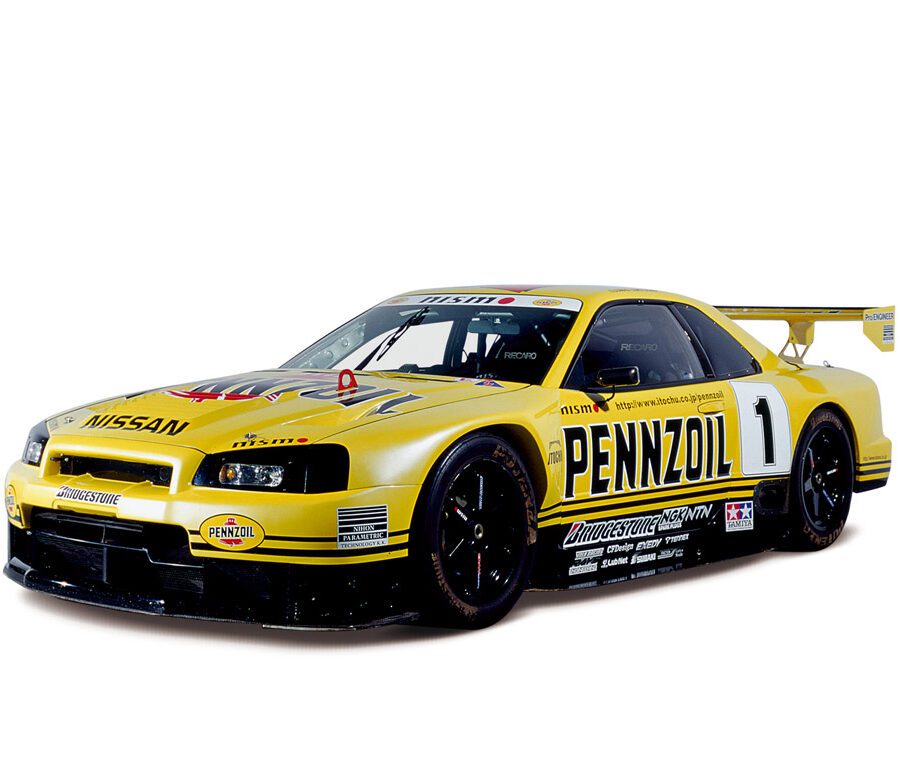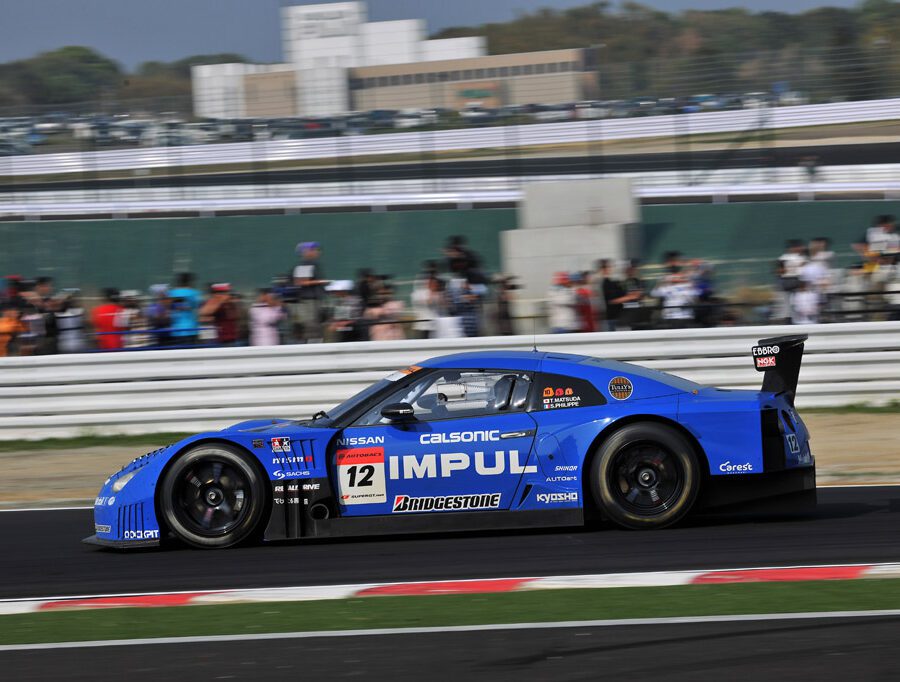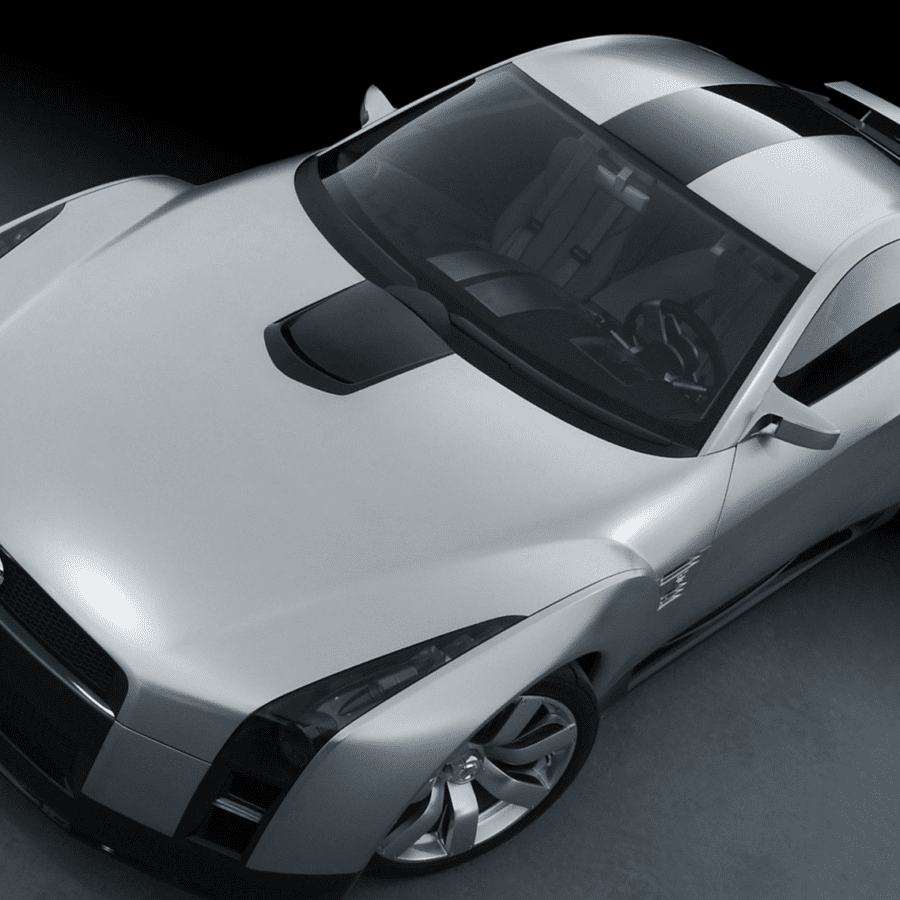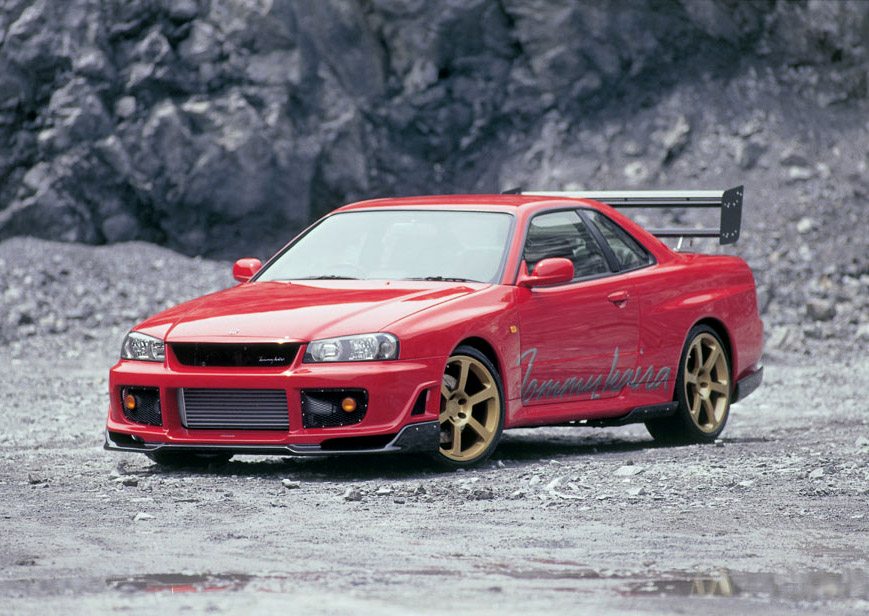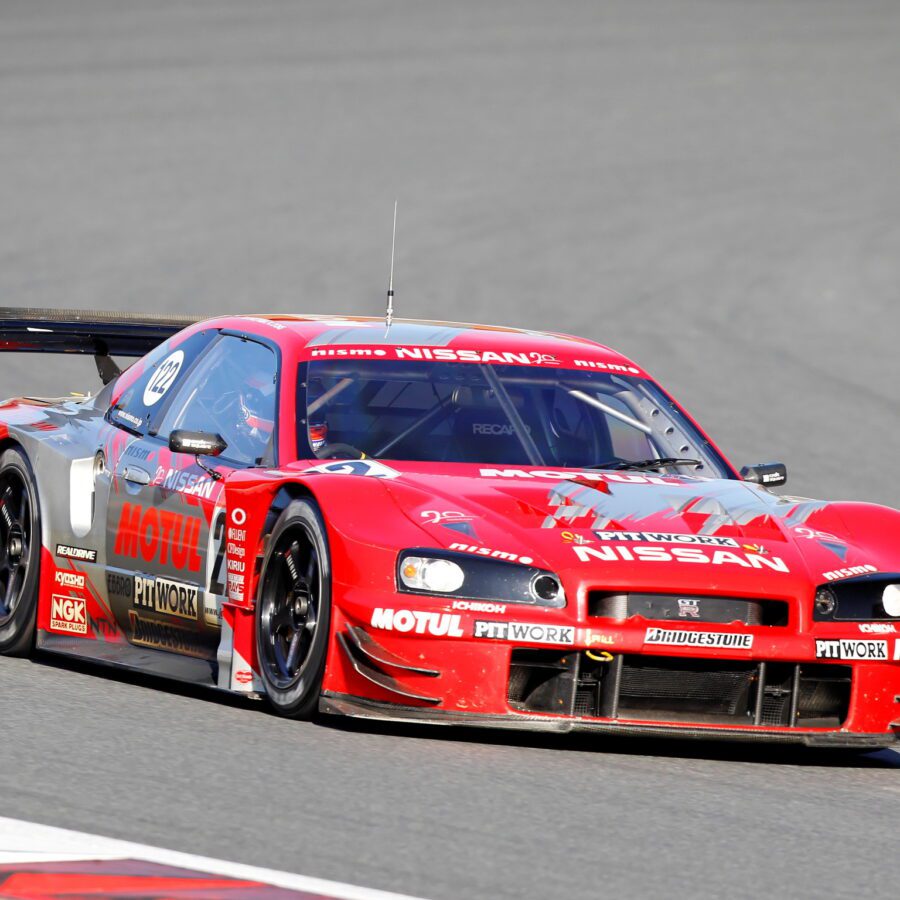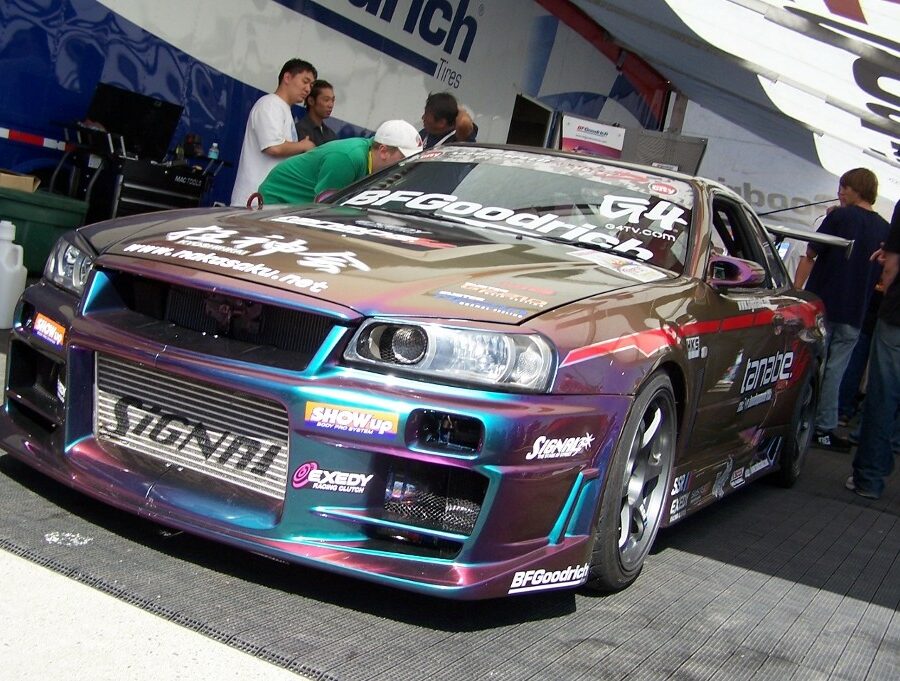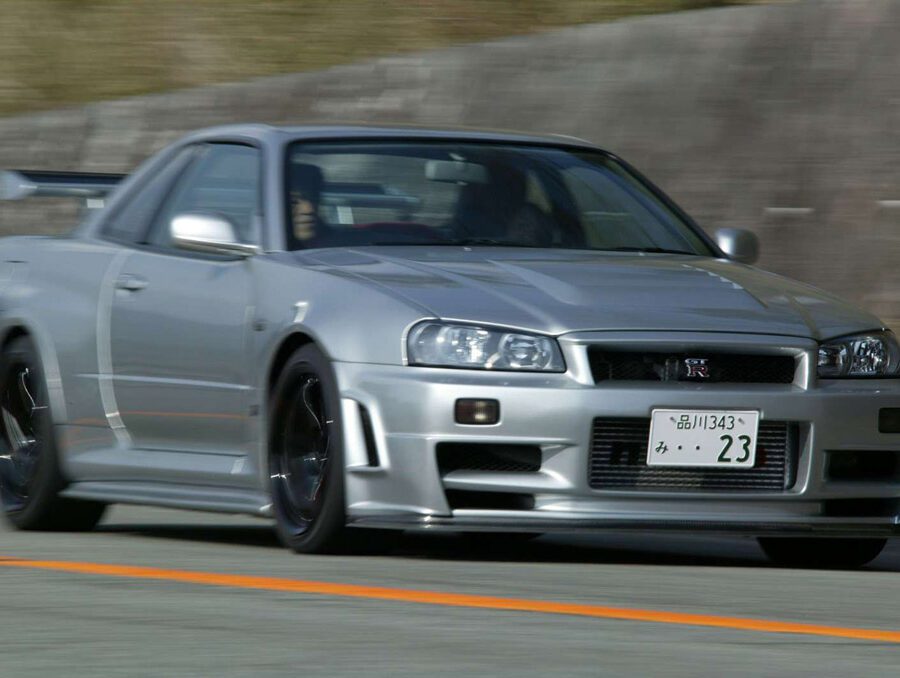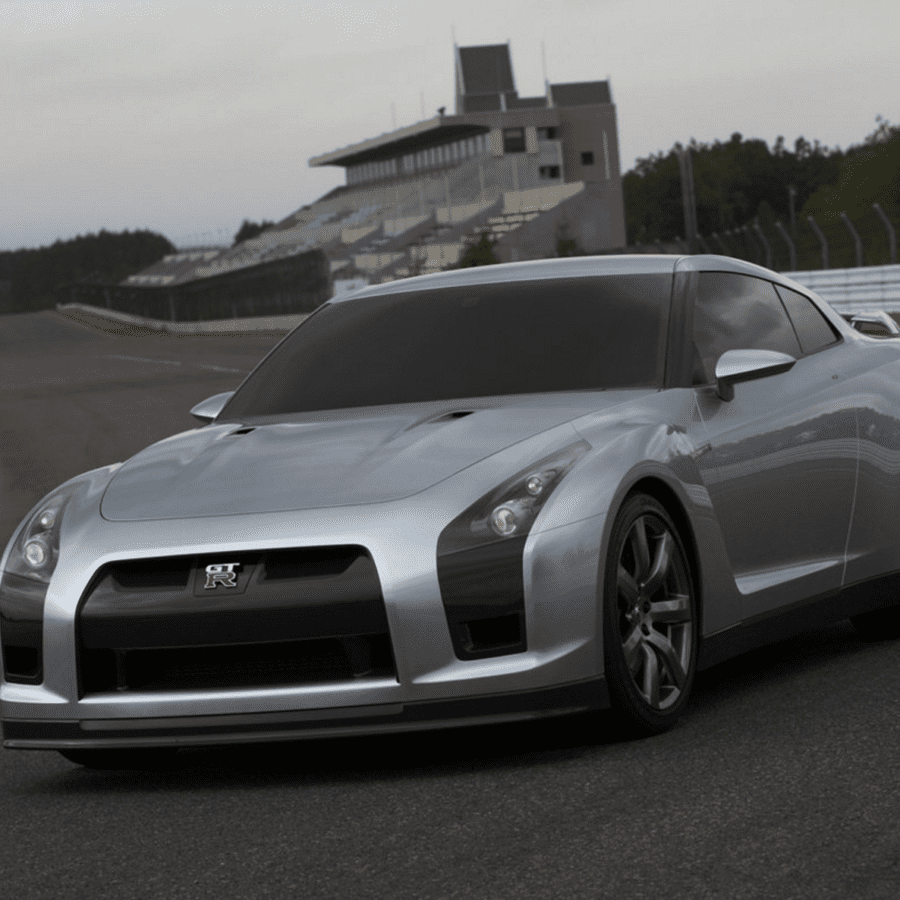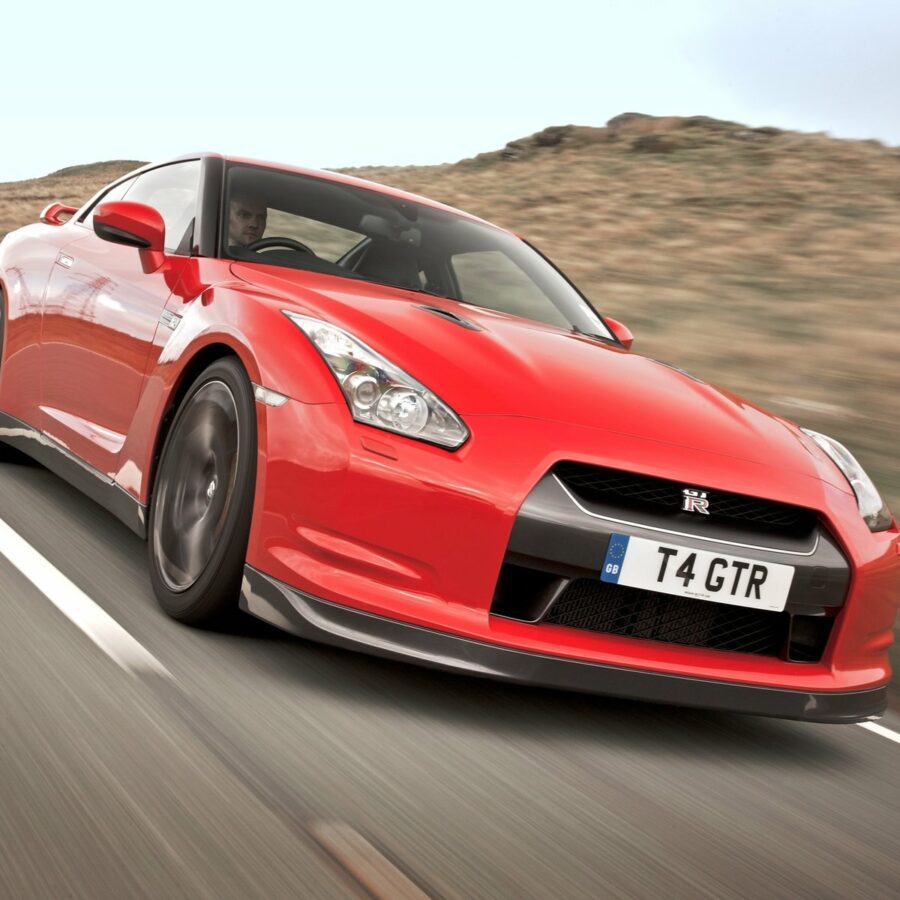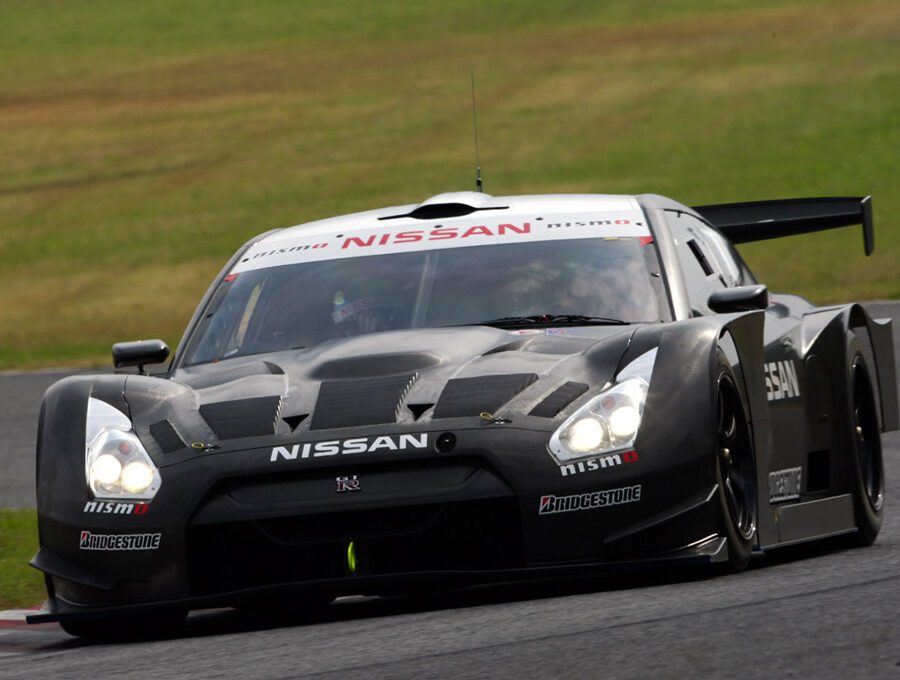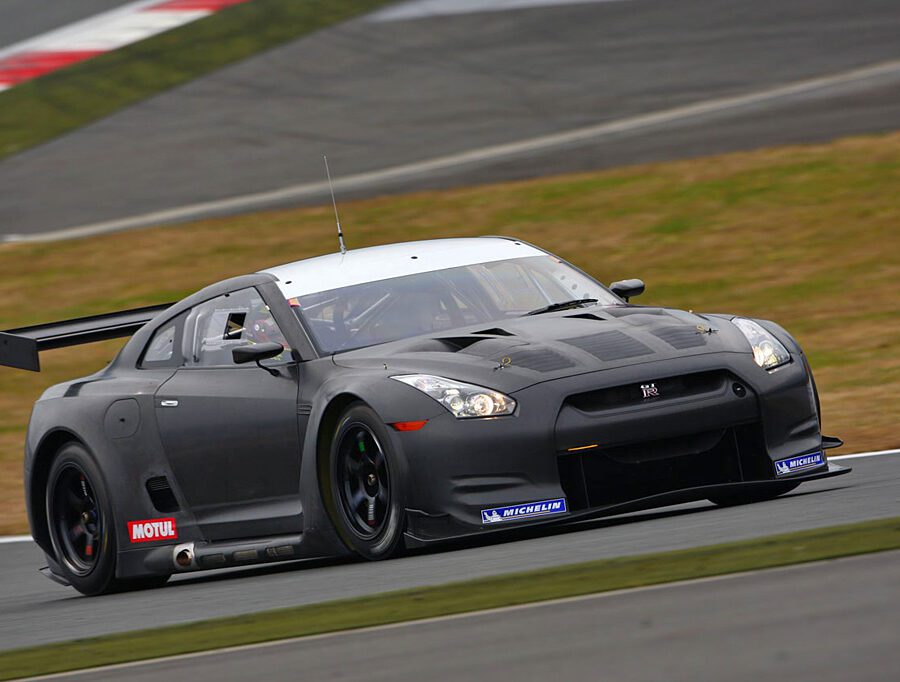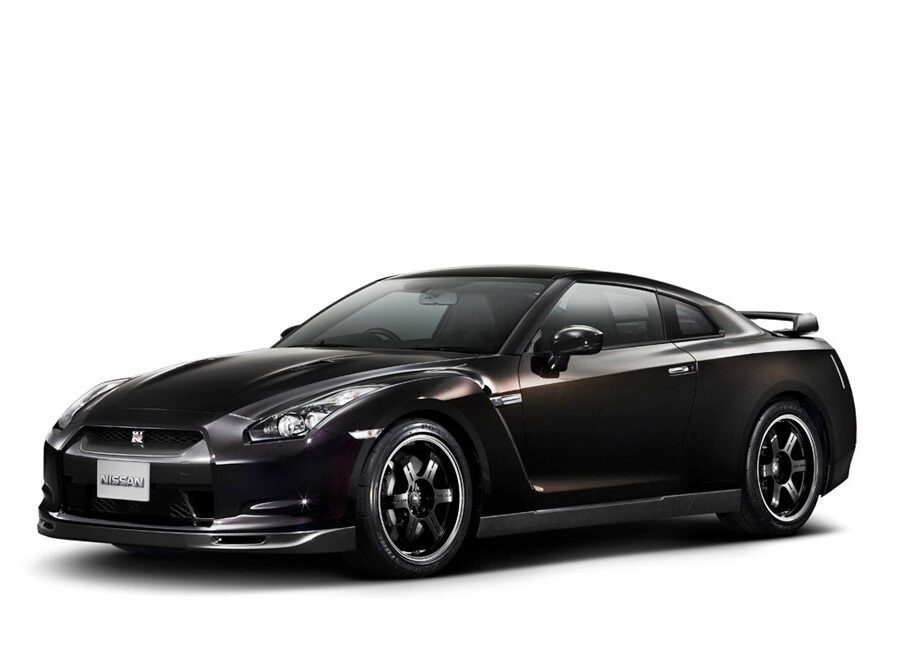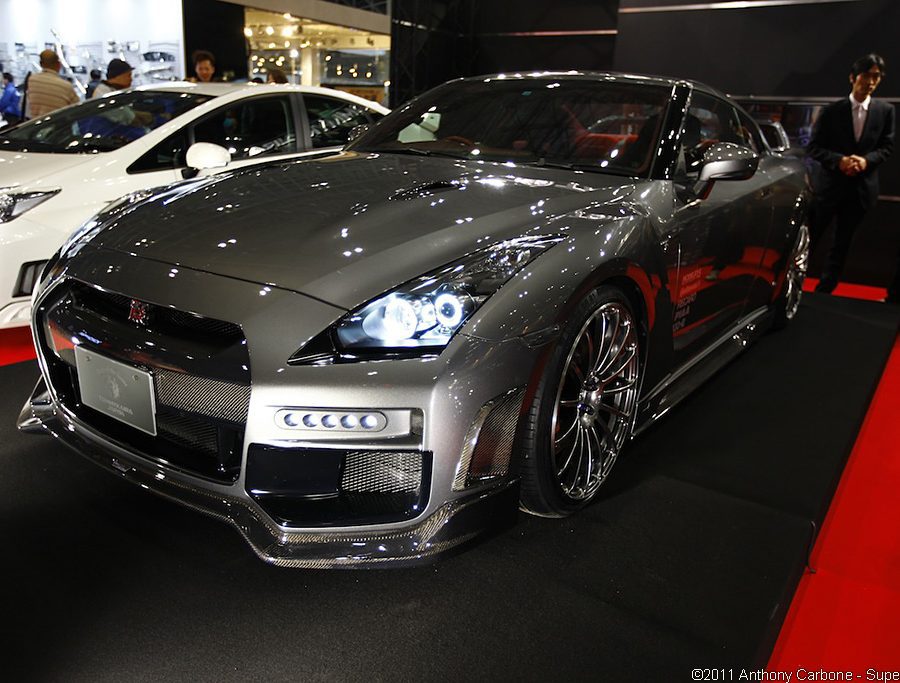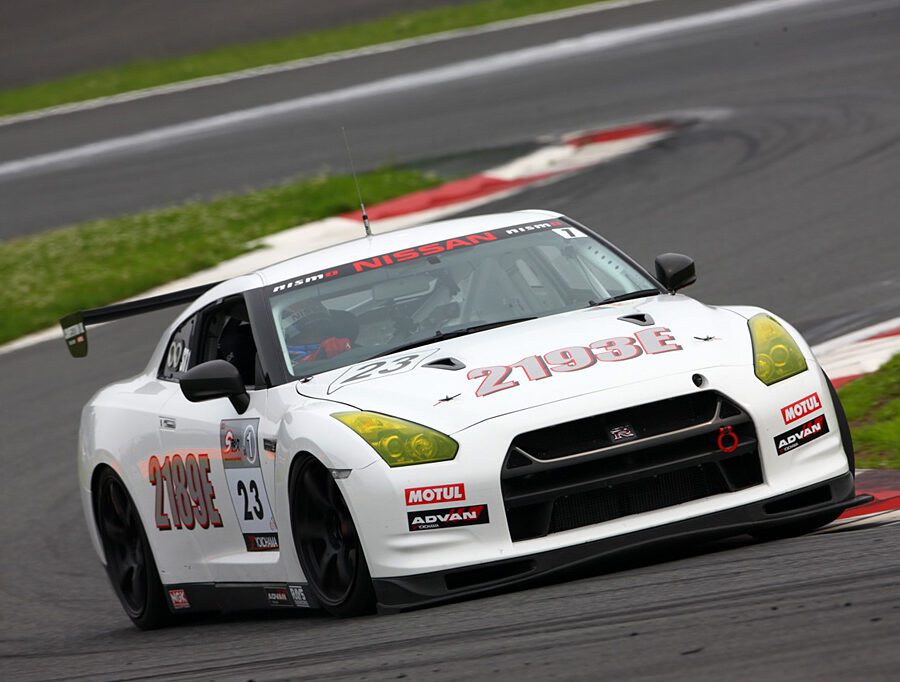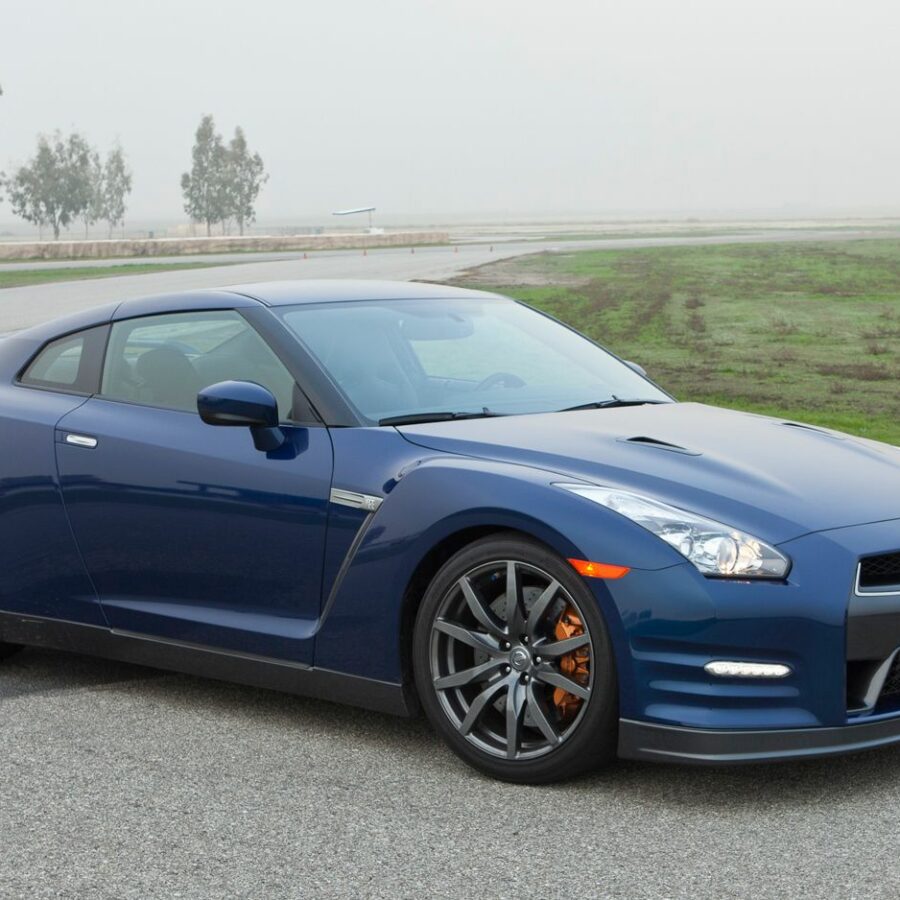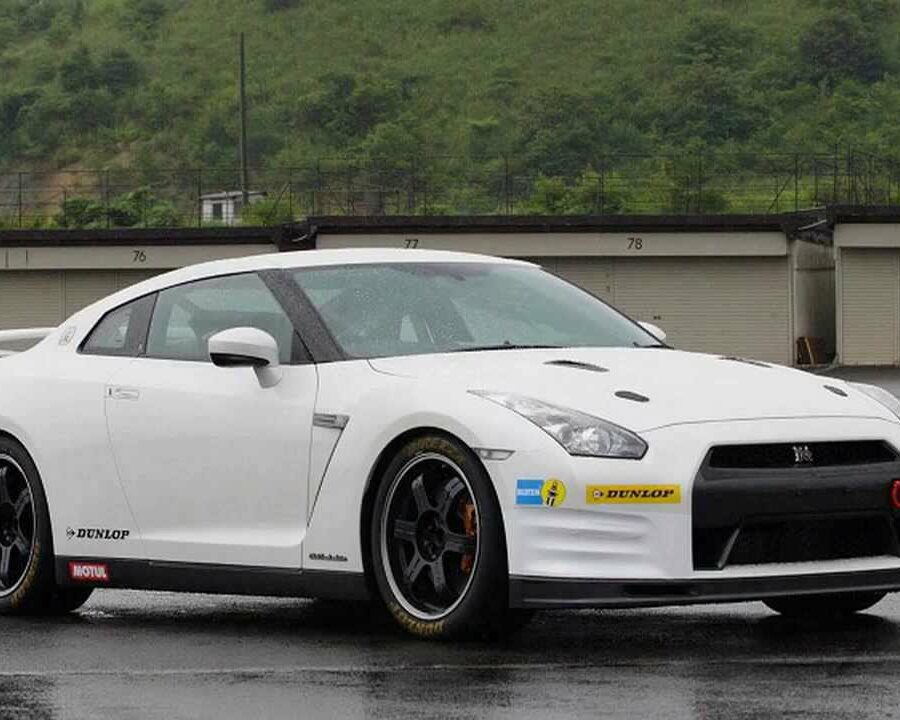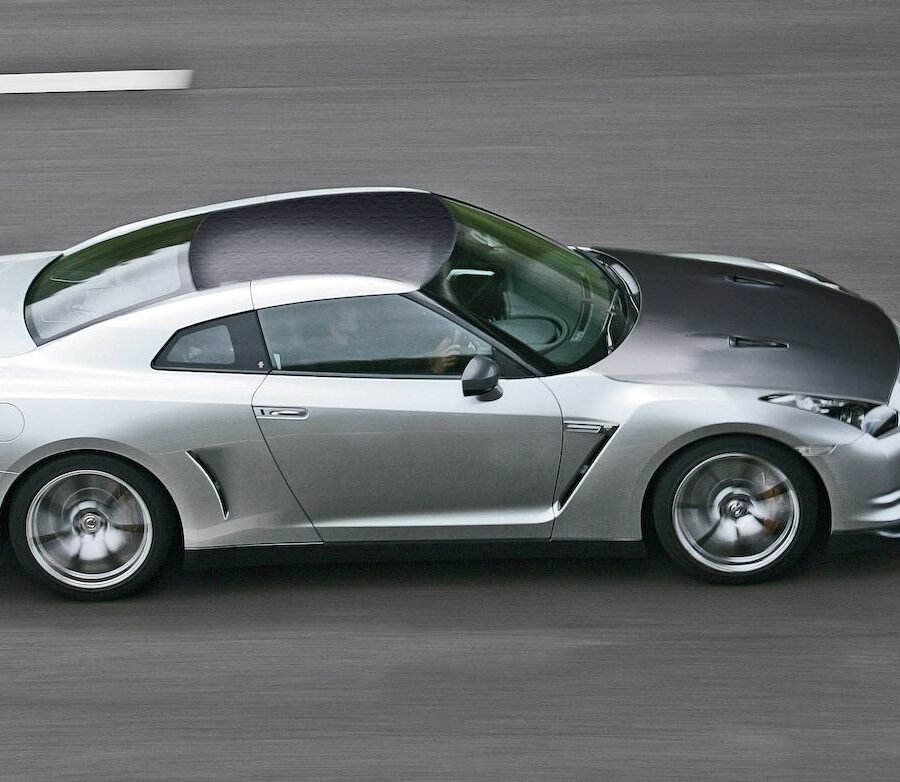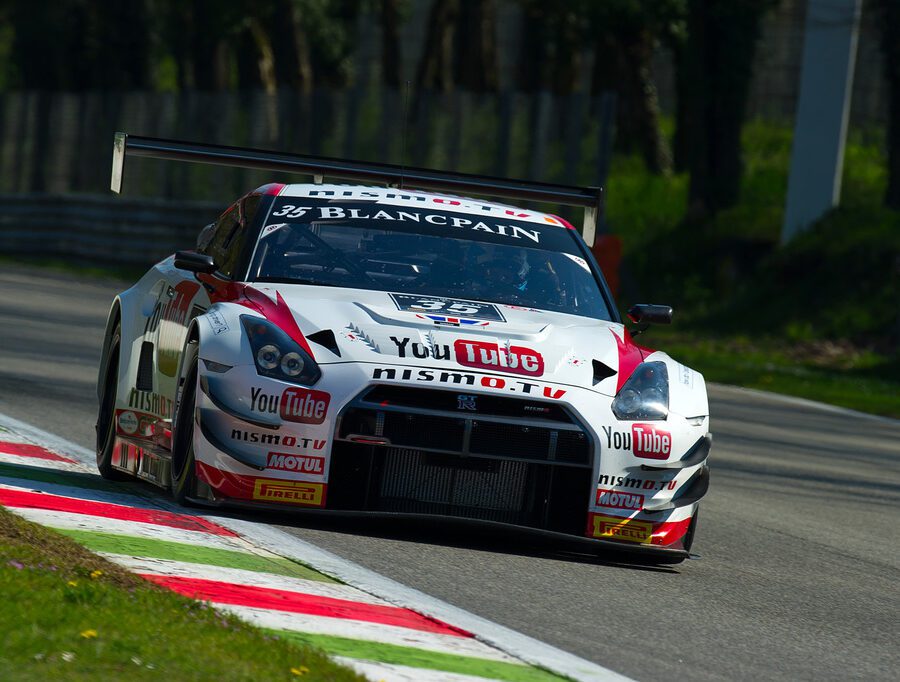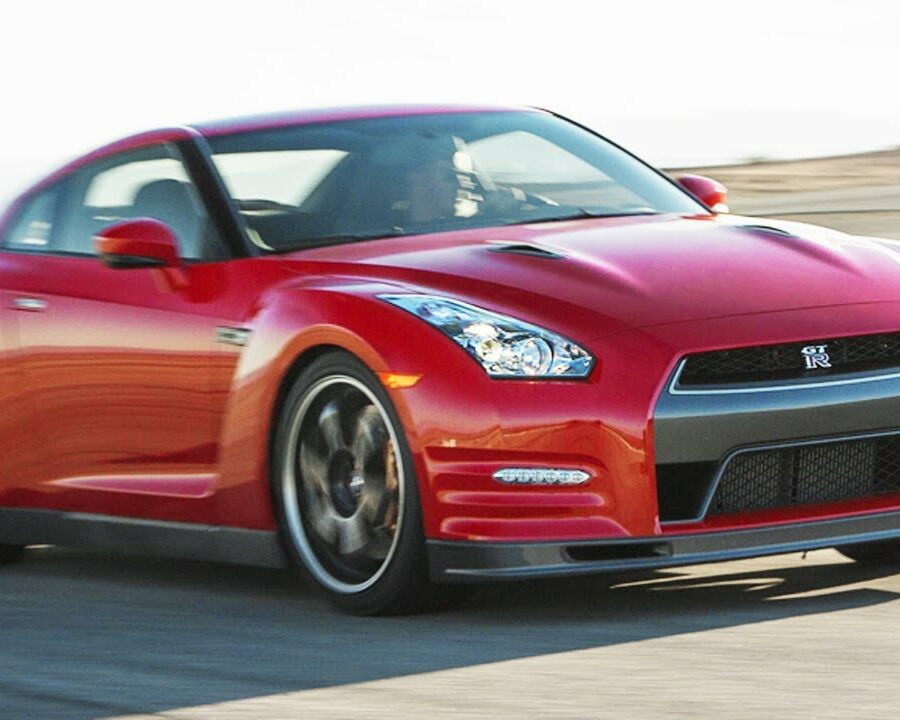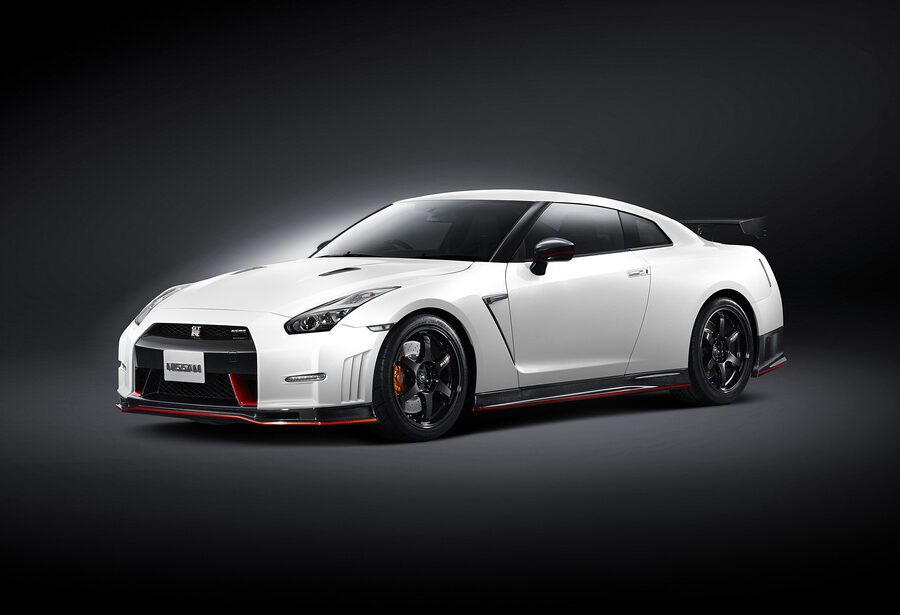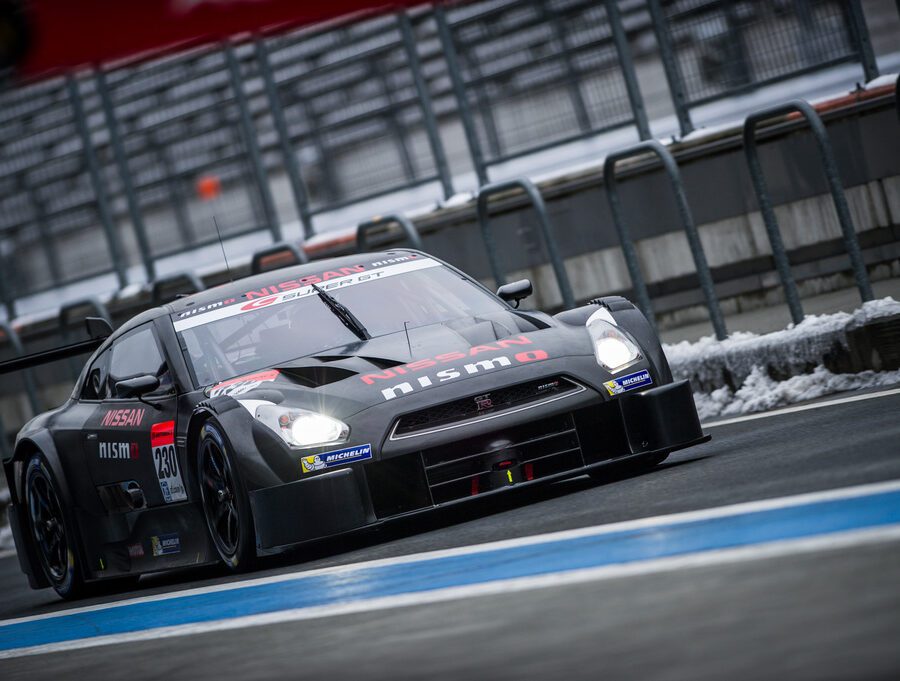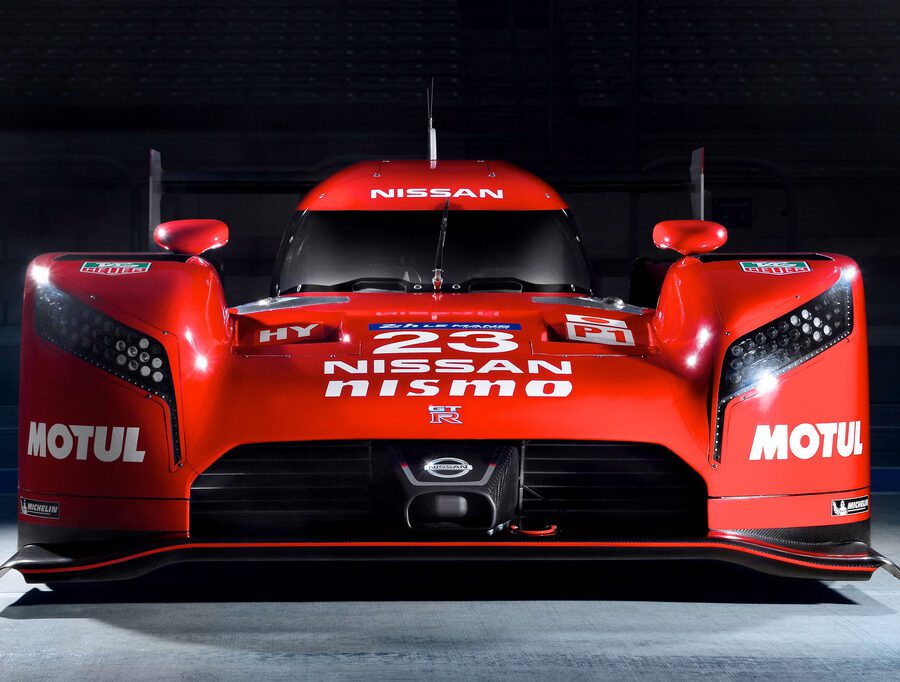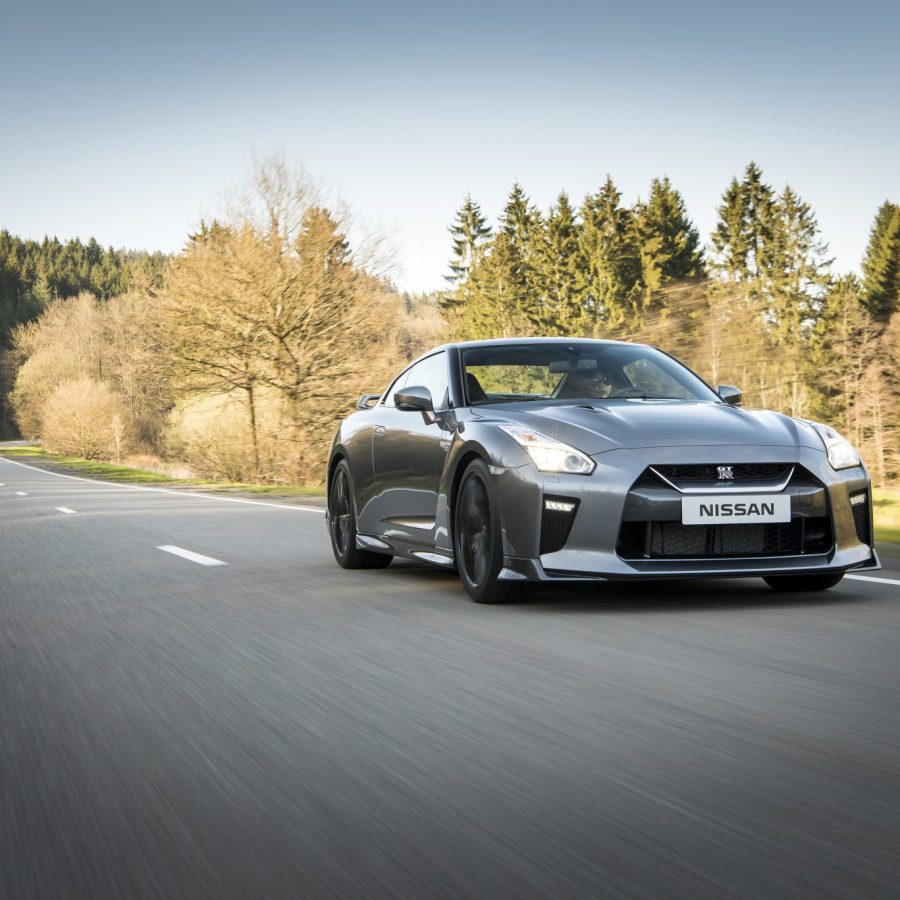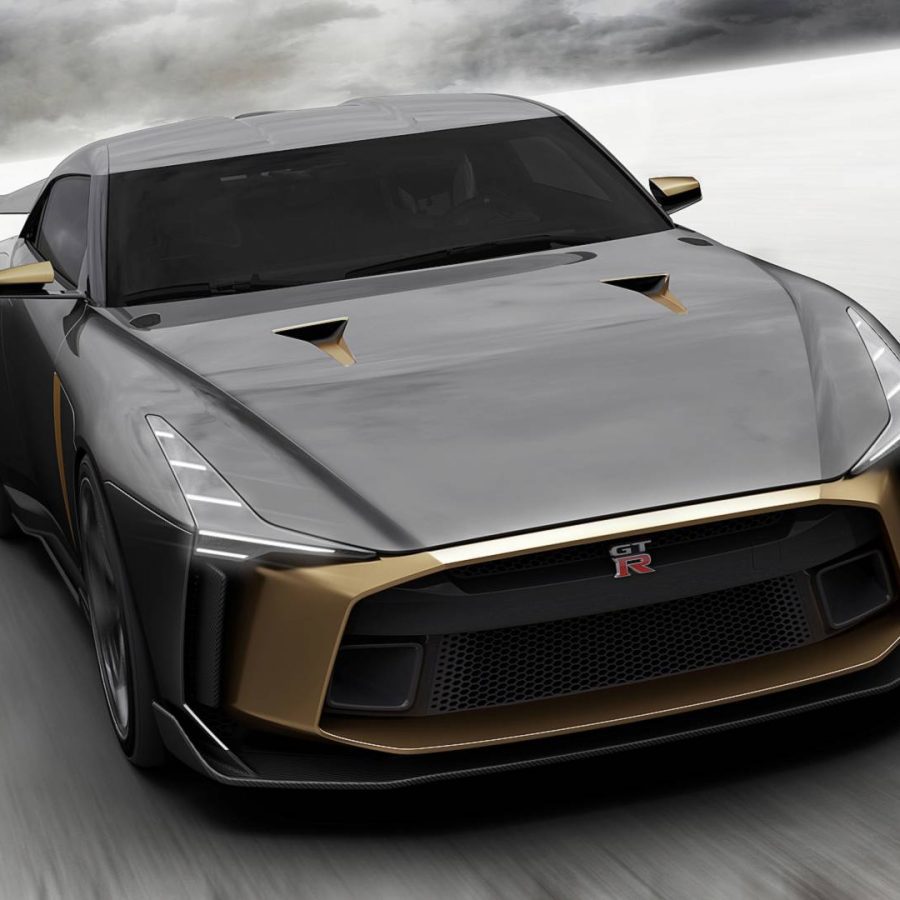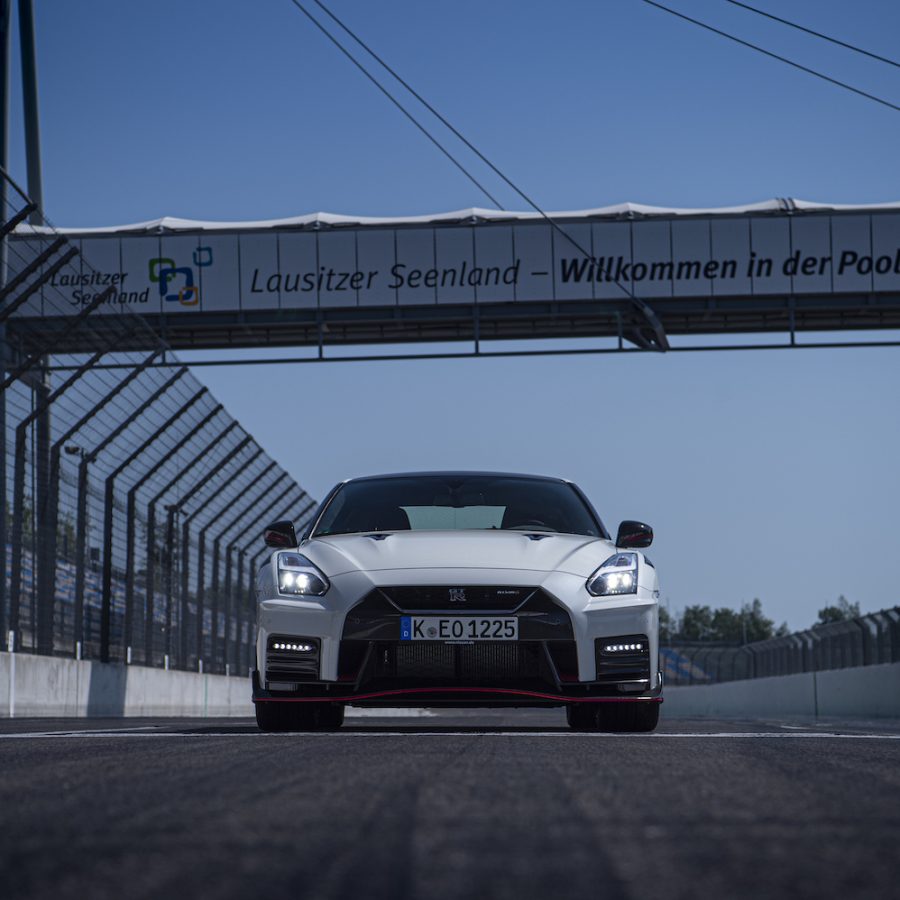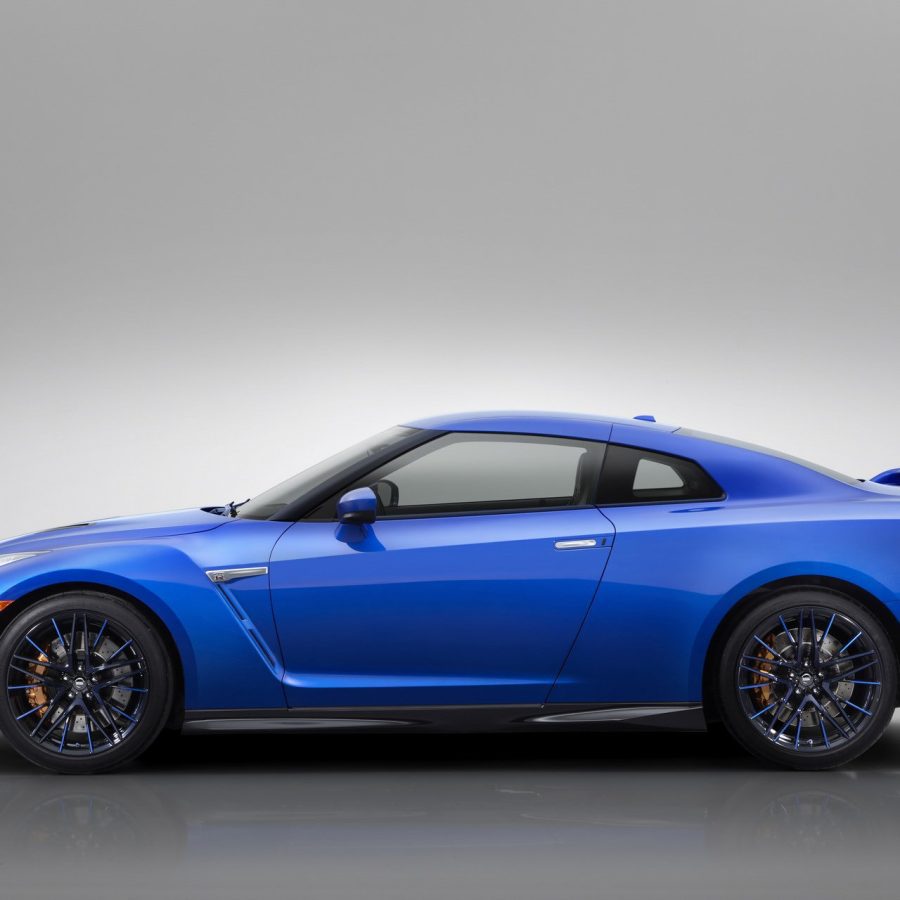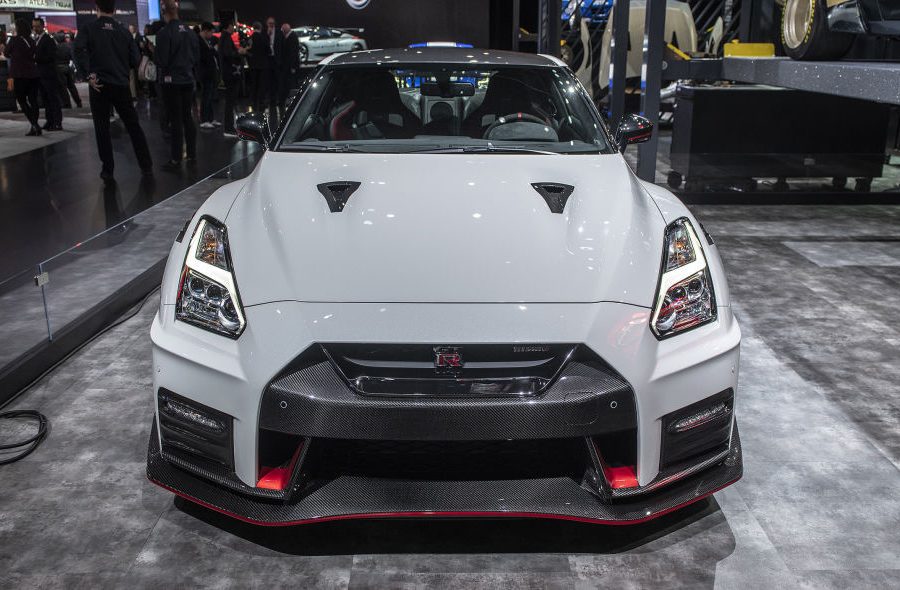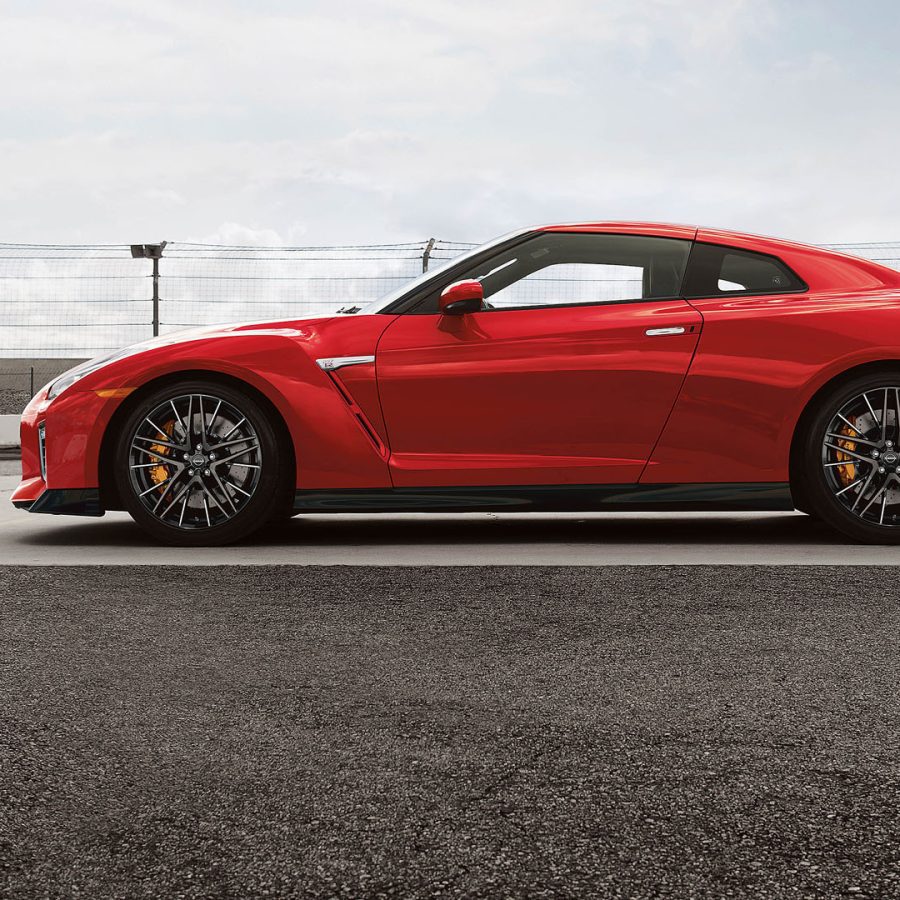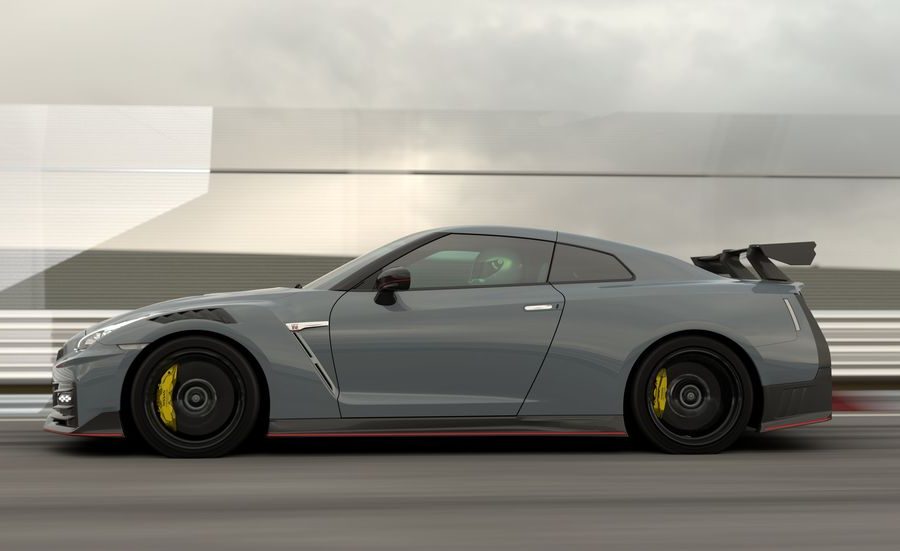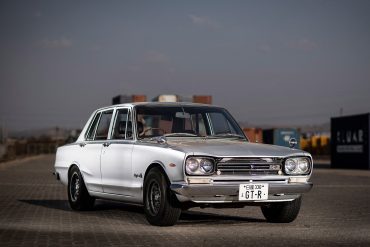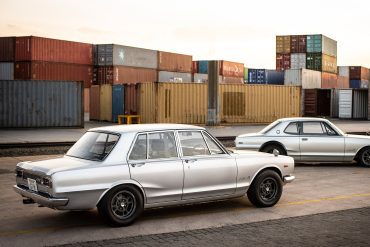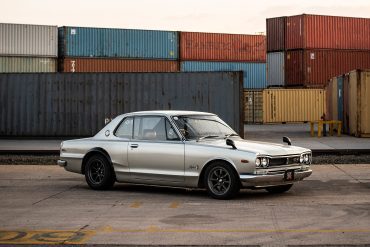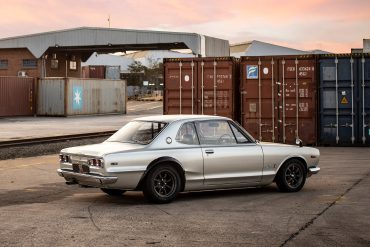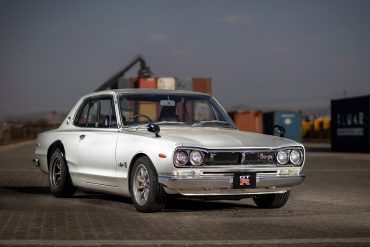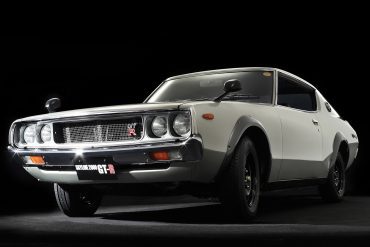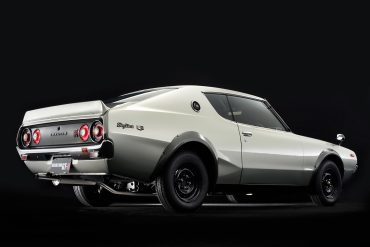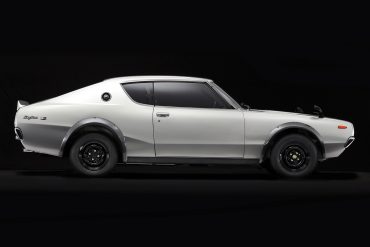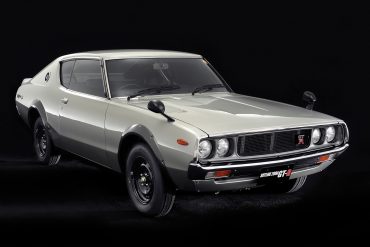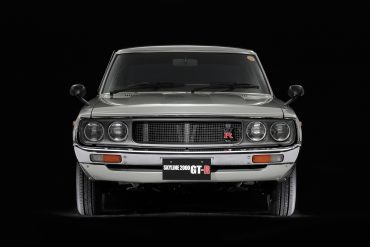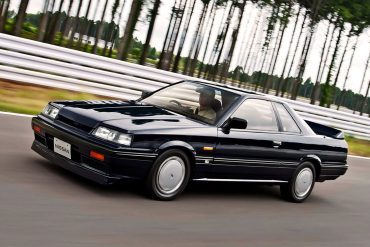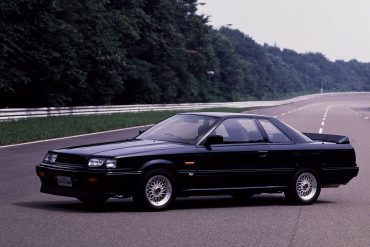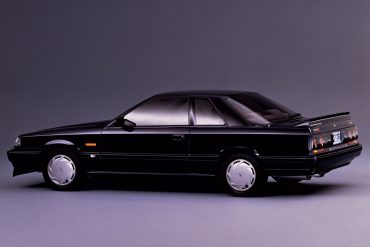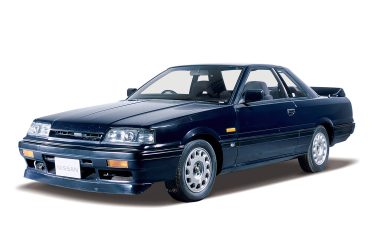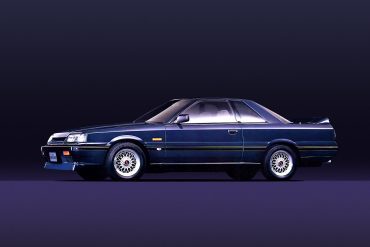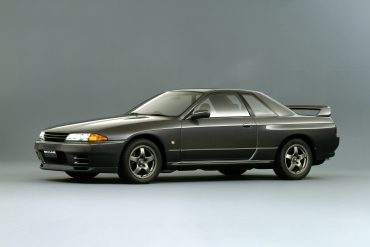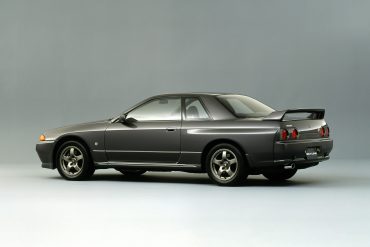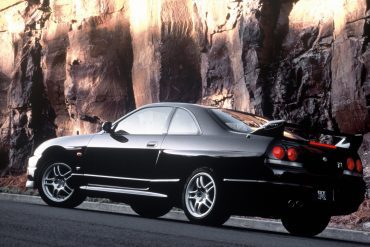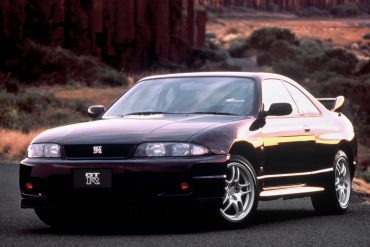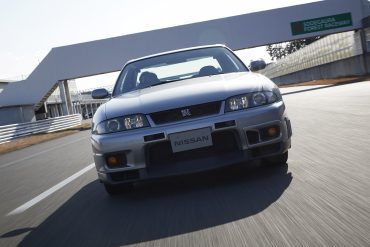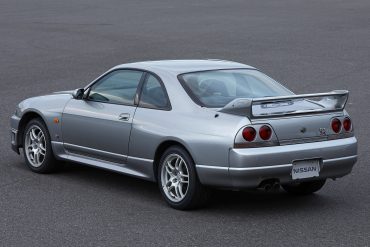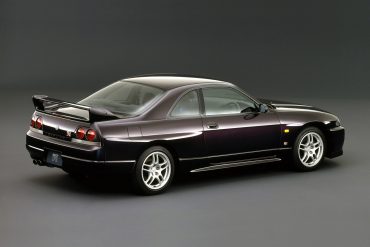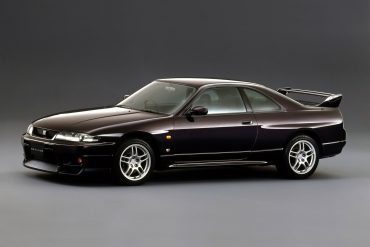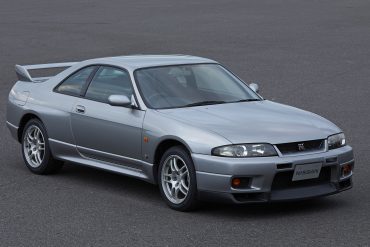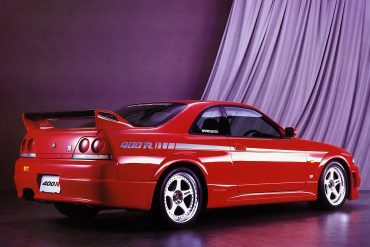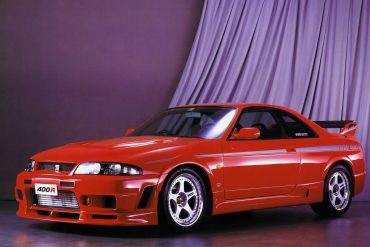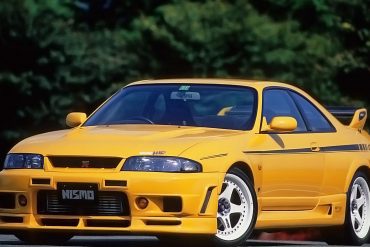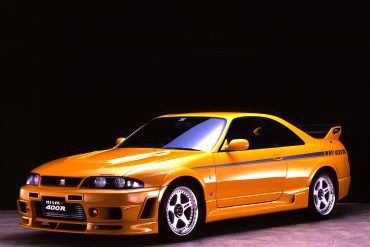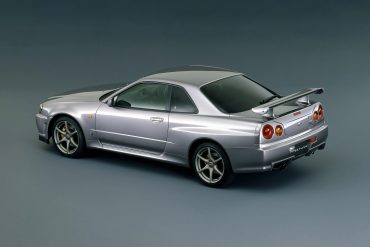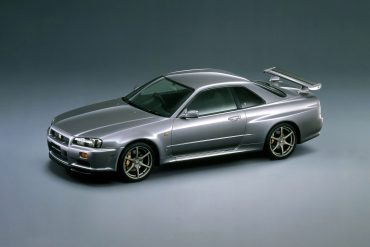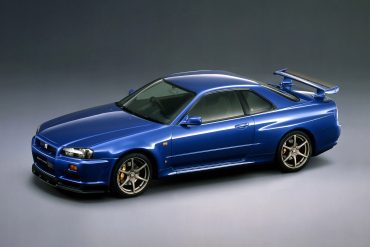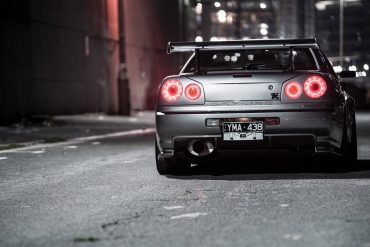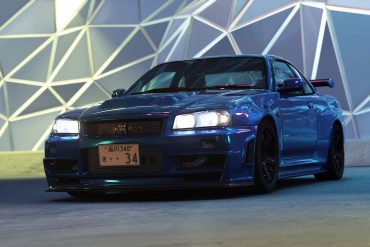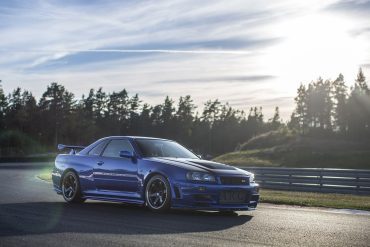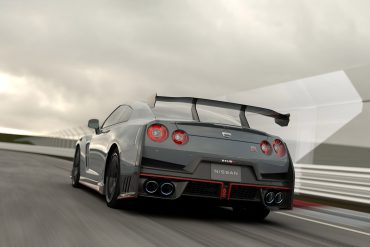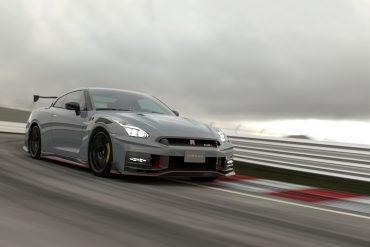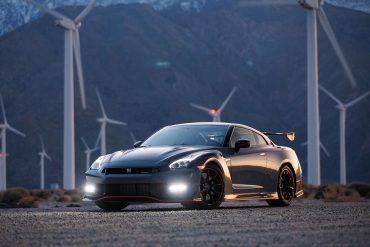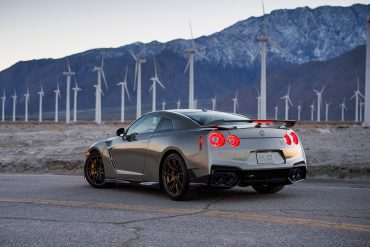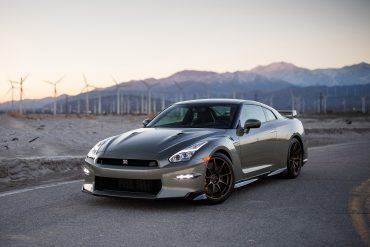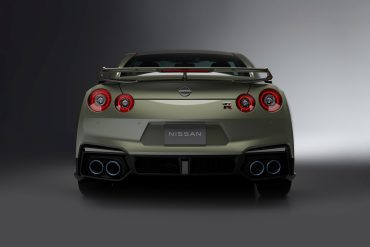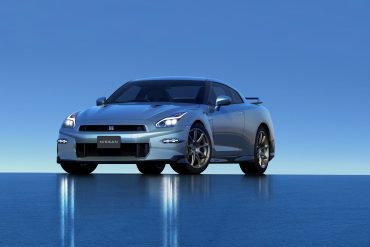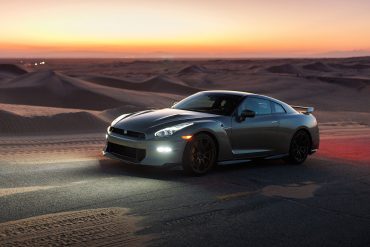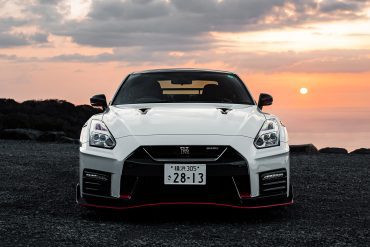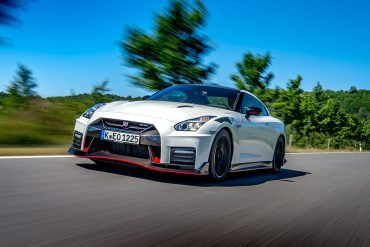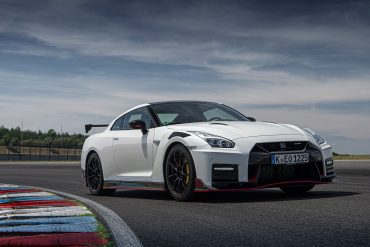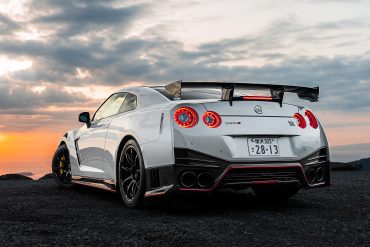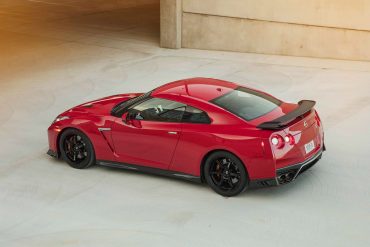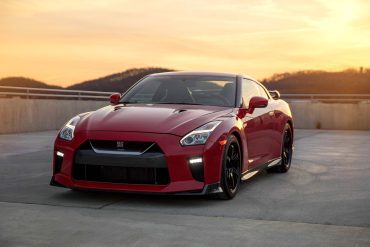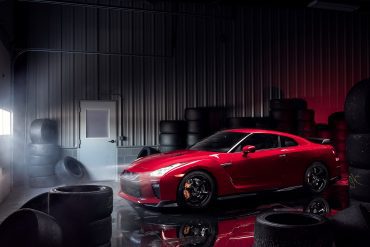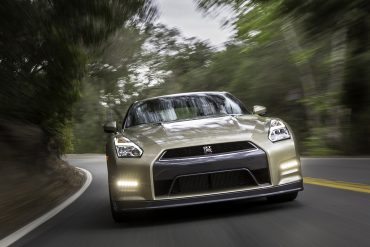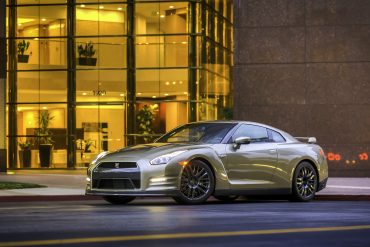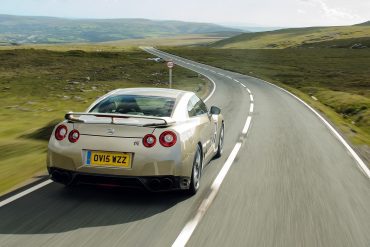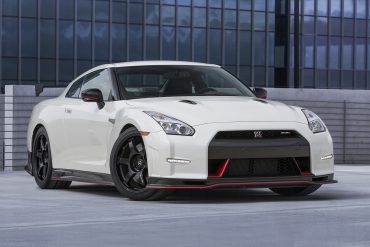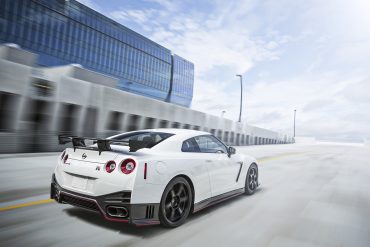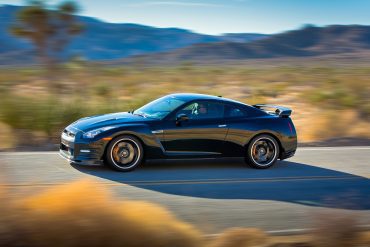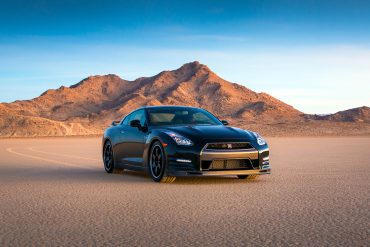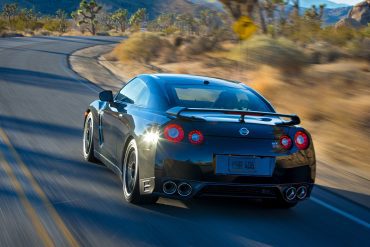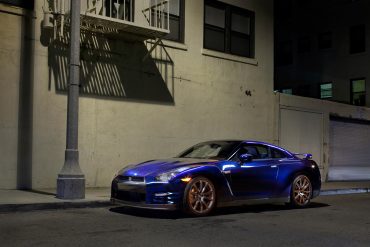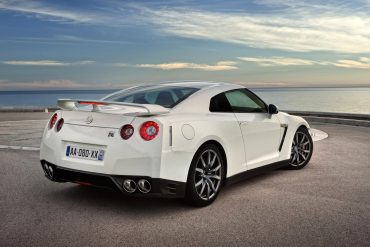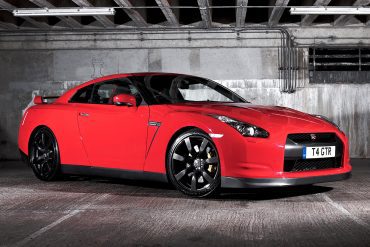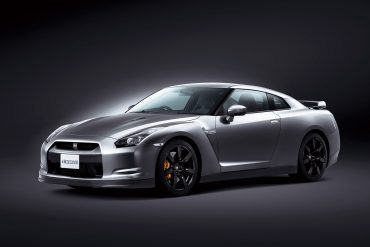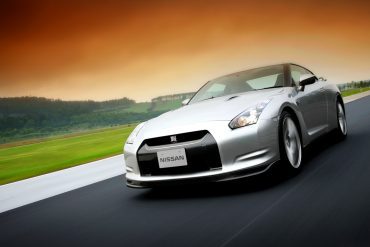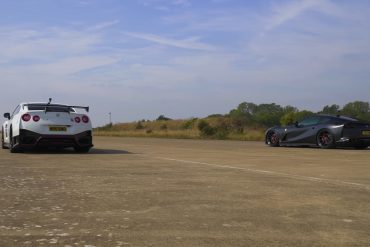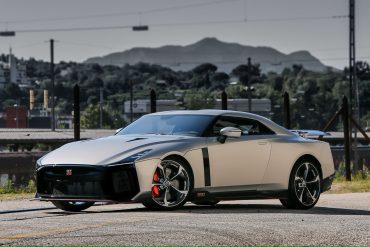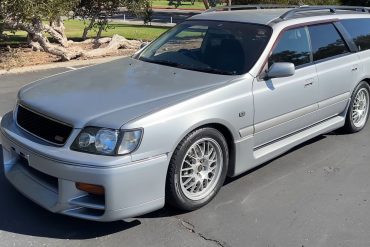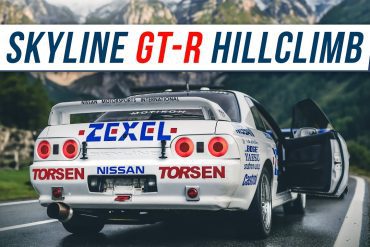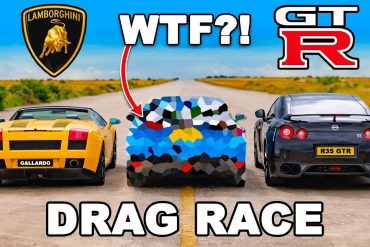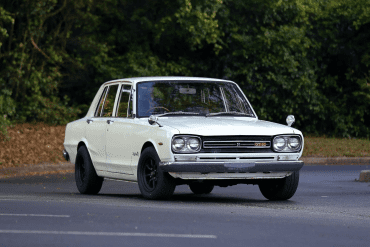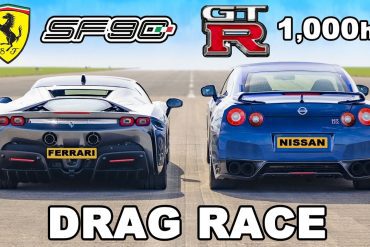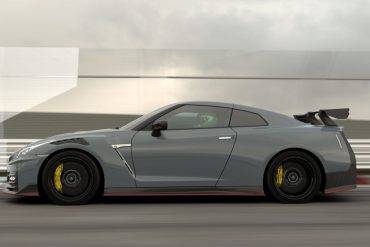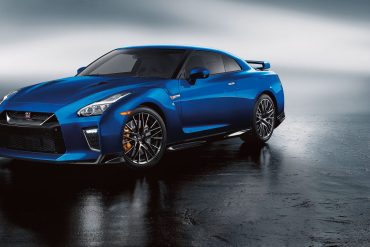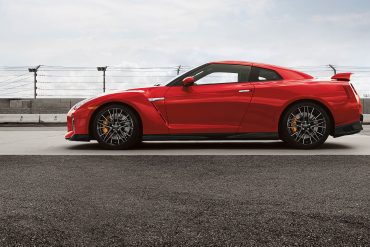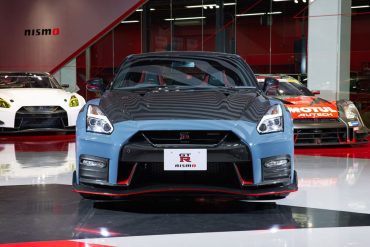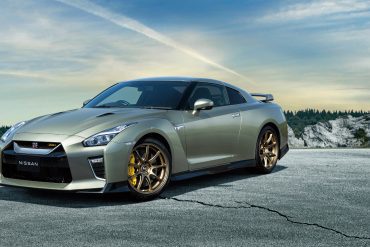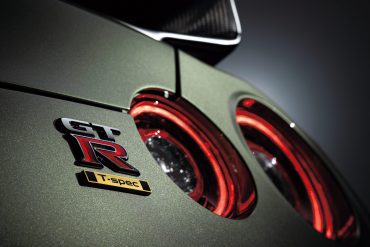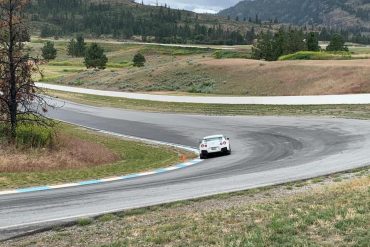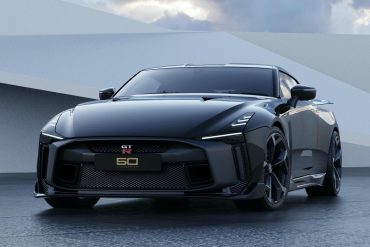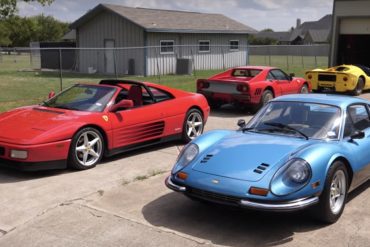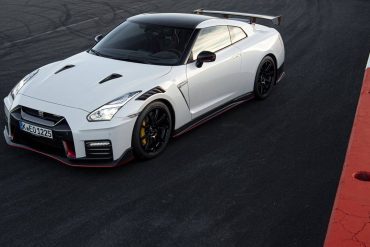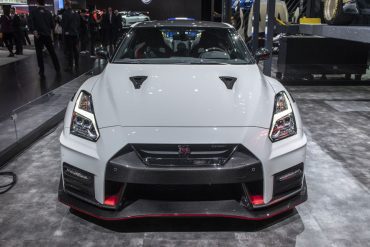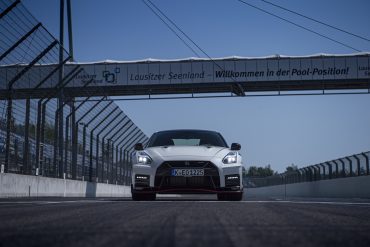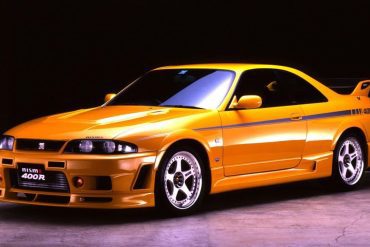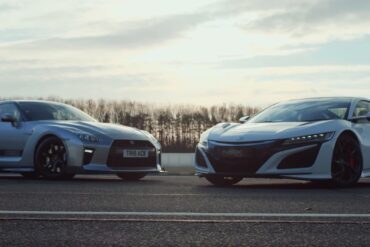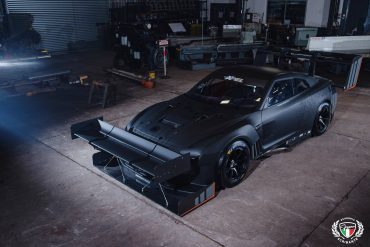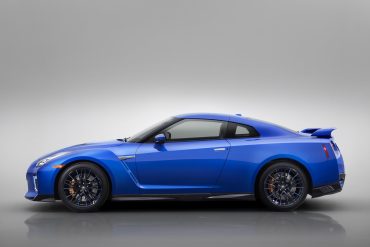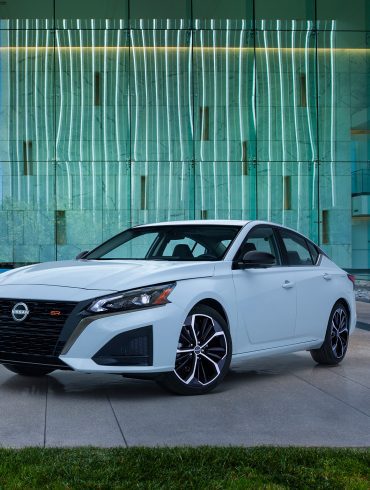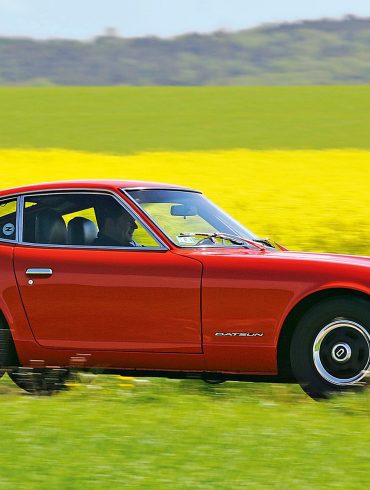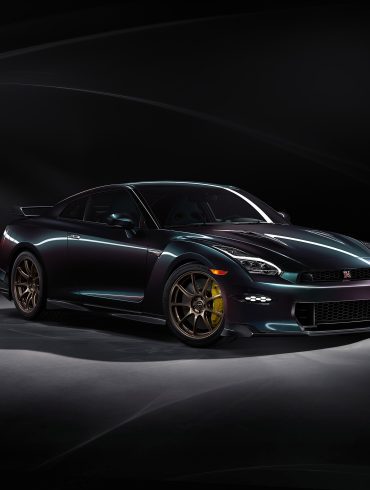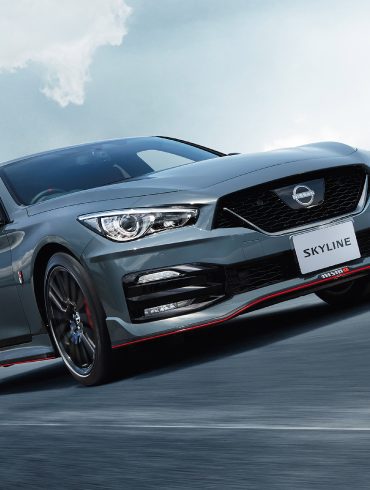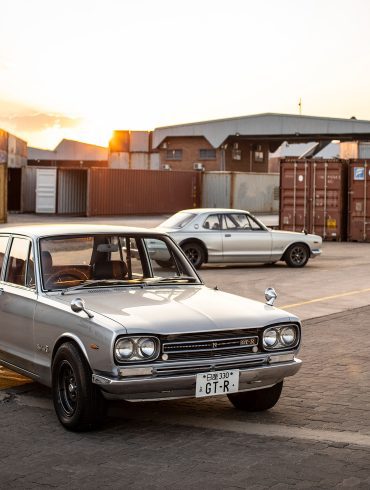Nissan GT-R
Nissan GT-R and Skyline GT-R: A Guide to Every Generation, Special Edition & Everything Else You Ever Wanted to Know
Overview / Featured / GT-R Generations / Every Variant Ever / Models In-Depth / Image Gallery / More Updates
The GT-R - A Brief History
On March 5, 1964, a basic-looking Japanese sedan passed a Porsche at Suzuka. The underdog Skyline passing the exotic mid-engined Porsche 904 was the moment where the GT-R story begins. That moment showed the world that German cars were beatable.
Back it up a minute. Wait, you're telling me that the GT-R story didn't start with the R32 GT-R? That is correct. The R32 isn't even the first car to be called a 'Skyline GT-R.' That would be the early 1970s 'Hakosuka' model. But between that car and the R32, there was another Skyline, the 'Kenmeri' Nissan Skyline GT-R, which is generally overlooked today. Confused yet?
The first Nissan Skyline GT-R wasn't initially a Nissan at all in fact. The model began as the Prince Skyline, which competed in the Japanese Grand Prix in the 1960s against Porsches. With the mid-engine R380, it eventually won the 1966 race, impressing Nissan so much that it bought Prince altogether. The Nissan Skyline 2000GT-R sedan was born exactly from this automobile in 1969. It was later available as a coupe and was given the internal number KPGC10.
The first Skyline GT-R was unleashed to the public in February 1969. Based upon a stretched front four-door sedan, the Nissan Skyline GT-R 'Hakosuka' was a sporty car with actual racing technology at the time. It got a 2.0-liter straight-6 engine based on the R380's engine that produces 130 horsepower. The race-derived S20 inline six-cylinder and featured dual overhead camshafts, a cross-flow head with four valves per cylinder, and a hemispherical combustion chamber fed by triple dual-throat Mikuni-Solex sidedraft carburetors. A sportier two-door coupe would then debut the following year. Though the Hakosuka GT-R was built in limited numbers in both coupe and sedan form, it was the final iteration that would be the rarest of them all.
The redesigned Skyline Coupe (type C110) was launched in November 1972, with the high-performance 2000GT-R version released in January 1973. Like its forbearer, the new Skyline was christened with a unique nickname. The “Kenmeri” was so dubbed after Nissan’s marketing campaign that featured the loving “neo-American” couple Ken and Mary. However, the GT-R was not so cuddly and, like its indomitable predecessors, featured the same powerful S20 engine. This advanced engineering made it extremely desirable amongst enthusiasts in its homeland, the only market where it was available. However, stricter emissions regulations for 1973 quickly put an end to GT-R production; ultimately, only 197 examples were sold.
The eighth generation Skyline R32 was rolled out in May 1989. Three months later, the “GT-R” was brought back after the 16-year absence. The engine was a specially designed “RB26DETT” of 2.6-liter inline 6-cylinder DOHC twin turbo and generated maximum power of 280ps. The drive system was called “ATTESA E-TS” that was the electronically controlled torque split 4WD which transmitted the best torque to all the wheels. It even had the 4-wheel multilink suspension. These equipment realized one of the best performances all over the world as a sedan-based sport car. This GT-R has a record of amazing 29 victories and no defeat for 4 seasons at Japan Touring Car Championship from 1990 through 1993.
Introduced in 1995, the R33 Skyline GT-R built upon that foundation. The R33 was designed with a focus on refining the GT-R's performance and handling characteristics. It featured enhancements such as the ATTESA E-TS Pro all-wheel-drive system and the Super-HICAS four-wheel steering, which improved traction and stability. Powered by the RB26DETT engine, the R33 also saw improvements in aerodynamics and safety, making it not only faster but more user-friendly. Despite its heftier build compared to the R32, the R33 Skyline GT-R set a new standard for performance, including setting a lap record at the Nürburgring for production cars at the time.
Launched in 1999, the R34 Skyline GT-R is often considered the pinnacle of the Skyline series. It retained the RB26DETT engine but introduced significant technological advancements. The R34 was more compact and lighter than the R33, emphasizing agility and performance. It featured cutting-edge technology for its time, including an improved ATTESA E-TS Pro system and an LCD multifunction display in the dashboard that provided real-time engine and vehicle statistics.
The transition from the R34 Skyline GT-R to the R35 Nissan GT-R marked the beginning of a new era. Unveiled in 2007, the R35 was no longer part of the Skyline family. Nissan created a standalone model that was a technological tour de force. The R35 featured a completely new platform and a newly designed VR38DETT 3.8-liter twin-turbocharged V6 engine. The R35 GT-R showcased significant advancements in performance, handling, and technology, setting new standards for what a supercar could be at a fraction of the cost of its competitors. Its sophisticated all-wheel-drive system, advanced aerodynamics, and groundbreaking use of materials made it a formidable track weapon and a highly capable street car.
Since its introduction, the R35 has undergone continuous refinement and improvement. Nissan has annually updated the GT-R, enhancing its engine, aerodynamics, materials, and technology. Special editions like the GT-R NISMO have pushed the boundaries of performance further, featuring carbon fiber body panels, tuned engines, and track-focused aerodynamics. Despite the platform's age, Nissan's dedication to evolution has kept the GT-R competitive against newer rivals.
GT-R Fun Facts
Skyline Roots: The early GT-Rs were part of the Nissan Skyline family, hence their full name being the Nissan Skyline GT-R.
Godzilla's Birth: The nickname "Godzilla" originated from the R32 GT-R's dominance of Australian touring car racing.
A Global Icon: The R35 dropped the Skyline name entirely, marking the GT-R's status as a standalone supercar contender.
"This car has the potential to slaughter supercars…hence the nickname Godzilla."
Wheels Magazine (Australia)
Nissan GT-R Generations
The Nissan Skyline GT-R and Nissan GT-R Story
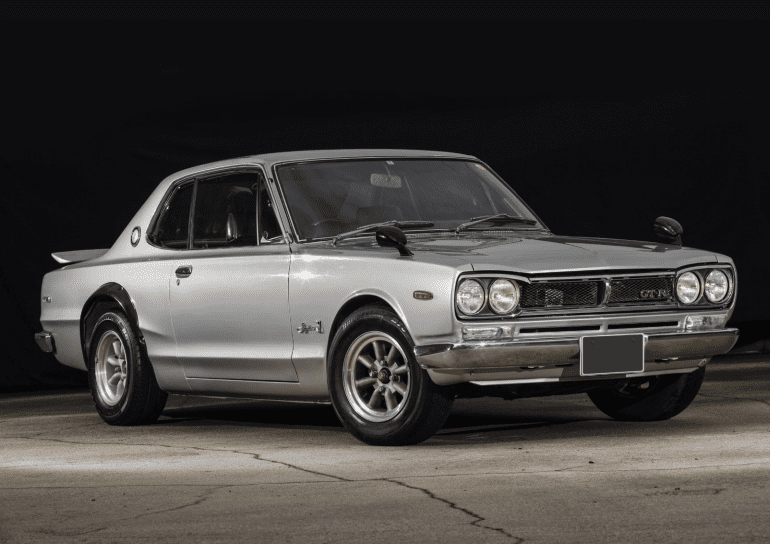
Nissan Skyline GT-R (PGC10)
Model code: PGC10
Nickname: Hakosuka
Production: Feb 1969 – 1972
Produced: 1,945 units
Designer: Shinichiro Sakurai
Body style: 4-door sedan PGC10, 2-door coupé KPGC10
Layout: Front-engine, RWD
Engine: 2.0 L S20 Inline 6
Transmission: 5-speed manual
Wheelbase: 2,570 mm (101.2 in)
Length: 4,400 mm (173.2 in)
Width: 1,665 mm (65.6 in)
Height: 1,370 mm (53.9 in)
Curb weight: 1,100 kg (2,425.1 lb)
Did You Know?
The PGC10 GT-R was created specifically to dominate the Japanese Touring Car Championship. And dominate it did! The GT-R scored an incredible 50+ consecutive race victories, establishing it as a force to be reckoned with.
Variants
PGC10 – The original four-door
KPGC10 – The 1971 two-door coupe model, known as the Hardtop.
The Nissan Skyline 2000 GT-R ‘Hakosuka’ (1969-1972)
The origins of the Nissan GT-R trace back to the 'Hakosuka.' Unveiled at the Tokyo Motor Show in late 1968, the high-performance Skyline sedan, initially codenamed PGC10, was introduced to the audience as the Skyline 2000 GT Racer. This name was quickly abbreviated to GT-R. In its first three years on the racing circuit, the Skyline GT-Rs dominated by winning 49 out of their first 50 races, eventually amassing a total of 52 victories.
After merging with the Japanese automobile manufacturer Prince, Nissan took the Skyline sedan model from Prince and branded it with the Nissan emblem. But the Skyline was far from a standard inherited sedan. Prince Motors had consistently participated in Japan’s elite racing competitions, so this was a competitive machine.
The high-performance version of this car, the 2000 GT-R, dubbed 'Hakosuka' or 'Boxy Skyline' in English, made its debut in 1969. Released for sale in Japan in February 1969, it was exclusively available through select dealerships known as Nissan Prince Stores. The concept was to create a car that felt right at home cruising through the streets of Saitama as well as dominating the racetrack.
The brains behind the inaugural Skyline GT-R was Shinichiro Sakurai, a stellar engineer from Prince Motor Company's early days, whom Nissan enlisted for the project. Sakurai, known for his tough leadership style, had spearheaded the development of the Prince R380 racecar, a coupe prototype that clinched victory at the 1966 Japanese Grand Prix. With the R380’s 2.0-litre straight-six engine being a key component of its success, Nissan opted to incorporate a modified version of this engine into the Skyline GT-R. No better man for the job then.
The GT-R, equipped with the 2.0-litre, straight-six S20 engine, boasted a redline of 7500rpm. The engine featured four valves per cylinder, hand-ported and polished heads, and was fed by three carburetors, producing 160bhp at 7000rpm. In a vehicle weighing just 1100kg in 1969, this power was pretty special.
This front-engine, rear-wheel-drive car was built on a steel chassis and featured an advanced suspension system: MacPherson struts at the front with firmer, shorter springs and dampers than the regular Skyline, semi-trailing arms at the rear, and anti-roll bars on both ends. Braking came from front disc brakes, and a significantly larger fuel tank was fitted, doubling the capacity of the standard Skyline 2000 GT's. The car also received a five-speed manual transmission upgrade from the standard four-speed, alongside a limited-slip differential, showcasing the technological sophistication of the late 1960s Nissan team.
By 1971, the GT-R transitioned from a four-door silhouette to a two-door coupe, featuring wider tires, an increased track width, a shorter wheelbase, and a standard boot lid spoiler. These enhancements sustained the GT-R’s early racing circuit dominance, leading to over 30 consecutive wins in 18 months.
Within its initial three years, the Skyline GT-Rs secured 49 victories out of the first 50 races they competed in, tallying up to 52 wins in total. With a curb weight of about 2100 lbs and the addition of fuel injection, the S30 engine produced just under 230 hp at 8400 rpm on track.
A legend was born.
Nissan Skyline 2000 GT-R ‘Kenmeri’ (1972 - 1973)
As a result of the first generation GT-R being tremendously successful on the racetrack (winning 52 races in its first three years), Nissan decided to make a sequel. The 1973 C110 Nissan Skyline GT-R, often known as the 'Kenmeri' variant, was the followup. The C110 Nissan Skyline GT-R is a bit more luxurious than the previous model, more influenced by American buyer tastes.
The KPGC110 is often mentioned alongside the Hakosuka Skyline GT-Rs because of its similarly short production span. Only 197 units were crafted between January and April of 1973, highlighting a distinct chapter in automotive history. In a parallel trend seen in the United States, the era of muscular engines from the 1960s was diminishing due to strict emission standards, pushing the KPGC110 Skyline GT-R to the edges of historical relevance. Its absence from the racing scene earned it the nickname "Phantom GT-R."
By the year 1973, the appearance of the Nissan Skyline GT-R had evolved significantly. Continuing the coupe design introduced by the Hakosuka, the next iteration of the GT-R adopted a fastback design, mirroring the sporty aesthetics of its American contemporaries. This generation also featured a more opulent interior, signaling the influence of the American market on its design direction. The marketing strategy for this car revolved around a fictional Western couple named Ken and Mary, portrayed by Jimmy Zanai from Japan and Diane Krey from America, who "explored" Japan in a blue 2000GT-X. Interestingly, neither of the actors was of legal driving age. The "Kenmeri" moniker, a blend of their names, also cleverly hints at "American," reflecting the Detroit-inspired styling of the second-gen Skyline.
The car retained the 'S20' straight-six engine, five-speed manual transmission, and limited-slip differential from its predecessor, the Hakosuka. It also maintained the four-wheel independent suspension system. However, the Kenmeri stood out by introducing disc brakes on all four wheels—a first for a Japanese market car. Slightly heavier than its predecessor in its road configuration, it introduced the iconic quad tail lights, now a hallmark of GT-R design. Unlike other C110 variants, the GT-R model was exclusively a coupe, but it offered the luxury of optional air conditioning, a rarity at the time.
Driving the original Hakosuka still offers an exhilarating experience. Its speed is derived not from sheer velocity but from its raw, sensory engagement. The S20 engine's sound and the steering's feedback contribute to its nimble cornering capabilities, impressively maintaining its composure over the years.
Assessing the Kenmeri's racing capabilities is difficult since, like its predecessor, it never competed. Nissan's racing endeavors were cut short, and many of its performance vehicles, including the GT-R, were discontinued due to emissions legislation. The focus shifted towards developing new technologies for emission control.
The oil crisis further dashed any hopes of the GT-R's success in America. Stricter emissions laws nearly erased the Kenmeri Skyline from existence. Fortunately, before discontinuation, 197 GT-R units found their owners. While Hakosukas are uncommon, Kenmeris are even more so, adding to their allure and rarity.
The automotive world would wait another 16 years for the next GT-R to emerge.
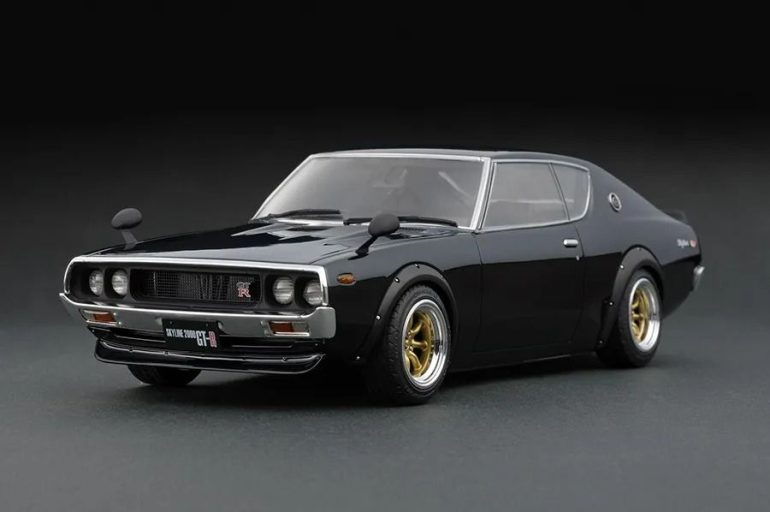
'Kenmeri' Nissan Skyline GT-R
Model code: KPGC110
Nickname: Kenmeri Skyline
Production: 1972–1973
Produced: 197 units
Designer: Shinichiro Sakurai
Body style: 2-door coupé
Layout: Front-engine, RWD
Engine: 2.0 L S20 Inline 6
Transmission: 5-speed manual
Wheelbase: 2,610 mm (102.8 in)
Length: 4,460 mm (175.6 in)
Width: 1,695 mm (66.7 in)
Height: 1,380 mm (54.3 in)
Curb weight: 1,145 kg (2,524.3 lb)
Did You Know?
The nickname "Kenmeri" comes from a popular ad campaign at the time featuring a young couple, Ken and Mary, enjoying their Skyline. This generation is important because it bridges the gap between the original "Hakosuka" Skyline GT-R and the later, more successful R32 GT-R revival.
Variants
Just one version of the KPGC110 was made before it was killed off. It was nicknamed the Kenmeri
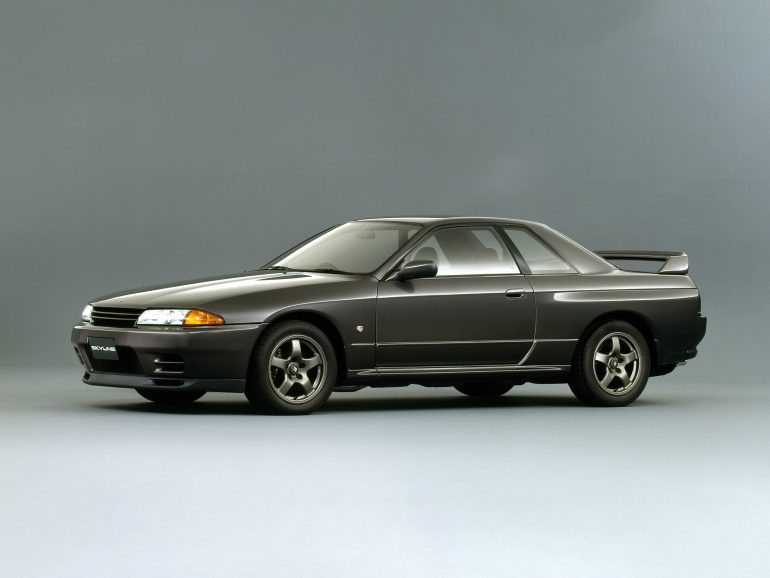
R32 Skyline GT-R
Model code: R32
Production: Aug 1989 – Nov 1994
Produced: 43,937 units
Designer: Naganori Ito
Body style: 2-door coupé
Layout: Front engine, AWD
Engine: 2.6 L twin-turbocharged RB26DETT Inline 6
Transmission: 5-speed manual
Wheelbase: 2,615 mm (103.0 in)
Length: 4,545 mm (178.9 in)
Width: 1,755 mm (69.1 in)
Height: 1,341 mm (52.8 in)
Curb weight: 1,430 kg (3,153 lb)
Did You Know?
The R32 GT-R earned its "Godzilla" nickname by absolutely dominating the Australian Touring Car Championship, winning so often that it sparked rule changes. It also crushed the Japanese Touring Car Championship (JTCC) for four consecutive years, solidifying its racing pedigree.
The Variants
GT-R (Series 1)
GT-R Nismo
GT-R (Series 2)
GT-R (Series 3)
GT-R V·Spec
GT-R V·Spec II
GT-R N1
GT-R V·Spec N1
GT-R V·Spec II N1
The Nissan Skyline GT-R R32 (1989 - 1994)
The Skyline had been through many phases, but it was in 1989 that the real precursor to the GT-R of today was introduced. The R32 Skyline GT-R had all-wheel drive and the famed Nissan RB26DETT inline six engine that pumped out 280 horsepower. A stripped-down version of the R32 entered the Japanese Touring Car Championship in 1989 and won every race it started—29 in a row—over the next four seasons. It was then that the legend of the GT-R was truly born.
The ghost of the Hakosuka loomed large. Nissan's Skyline models boasted sporting intentions, but none had truly embodied the raw spirit of the GT-R legend. The pressure was on – could Nissan finally recapture the magic?
The challenge of resurrecting the GT-R name was significant, and with Shinichiro Sakurai's illness, the responsibility fell to his protege, Naganori Ito. Ito, who had overseen the development of the R31, faced the task of surpassing its lukewarm reception with the R32.
By the late 1980s, competitive Skylines boasted straight-six, turbocharged engines capable of 500bhp in their racing configurations. The R32 Skyline GT-R marked a pivotal moment with the introduction of an all-wheel-drive system and the RB26DETT 2.6-litre twin-turbo engine. Officially rated at 276bhp—though commonly delivering more—this setup became a cornerstone for future GT-R models, emphasizing power and traction.
Ito-san knew a true GT-R had to roar as much as it raced. The solution lay in the RB26DETT. This twin-turbocharged beast, a stroked-out evolution of the previous engine, hinted at monstrous power. Officially, it was rated at 276hp to abide by the 'Gentleman's Agreement.' Unofficially, it was a barely-contained 310hp storm.
However, the standout feature of the R32 was its ATESSA E-TS all-wheel-drive system, which provided a significant traction advantage over rear-wheel-drive competitors. This advantage translated into unmatched dominance on the racetrack.
Between 1989-1993, the R32 GT-R won every single professional race it entered in Japan. It caused quite a stir in Australia too. In fact, the Aussies got so tired of the exotic Nissan trouncing their domestic Fords and Holdens that they brandished it with the beastly ‘Godzilla’ nickname. Not intended as a compliment, the Godzilla title was quickly claimed as a badge of honor.
The R32 era also introduced several special editions. The Skyline GT-R Nismo, created in 1990 to meet racing requirements, was limited to 500 units and featured a Nismo body kit, alternative turbochargers, and no ABS. Nissan allowed standard car owners to upgrade to Nismo specifications. The V-Spec, celebrating consecutive Japanese touring car championships, came with 17-inch BBS wheels, enhanced Brembo brakes, and a refined suspension and ATTESA system. The V-Spec II, marking another championship victory, differed mainly in tires and branding. The most exclusive, the Skyline GT-R N1, offered a minimalistic, performance-focused version with just 63 units made, featuring large steel-turbined turbochargers, a Nismo body kit, and no ABS, stereo, or AC, all painted in Crystal White with a lightweight paint finish.
The Nissan Skyline GT-R R33 (1995 - 1998)
The Nissan Skyline GT-R R33 (1995-1998) was an evolution of its groundbreaking predecessor, the R32. It inherited the legendary RB26DETT engine, now with minor refinements, and the cutting-edge ATTESA E-TS all-wheel-drive system. However, the R33 was slightly larger and heavier than the R32, leading to some debate about its handling agility. To counter this, Nissan introduced features like Super HICAS (four-wheel steering) to enhance cornering. In its evolution from the R32, the R33 became a faster, more stable car.
The R33 GT-R was an evolution; very similar to the R32 with many shared components. On paper the R33 had lots of improvements over the R32, with more power and torque, more tech and more grip. The biggest downside to the R33 was its size. When Nissan decided to extend the Skyline’s wheelbase for the R33 and add 170 lbs weight on top, it made the core car not super competitive in racing. The R33 did achieve some success, albeit in a highly modified form in Japan’s Super GT Championship, with little international sporting credibility that the R32 had built for itself.
The fact is that the R33 benefited from a great deal of development over the R32, and is was very fun to drive. When the R33 was being developed in the early 1990s, Nissan had plenty of R&D money to throw at it and you could tell by driving it that it was a better overall package than the R32. The proof was in the data. The R33 was twenty seconds faster around the Nürburgring, thanks to slipperier drag coefficient, a more rigid structure, improved braking and suspension, and improved engine reliability as well as being less stressful at the limit.
A large part of the improvement was thanks to the ATESSA E-TS four-wheel drive system which had received a handful of upgrades which ultimately enabled it to react quicker to its environment. The much-loved RB26 powertrain remained under the hood, but again, in slightly better shape than it had been before. For example, whereas the R32 was occasionally criticized for having weak oil pump auxiliaries, this was addressed in the R33. Similarly, a strengthened five-speed manual gearbox arrived.
The R33 definitely had its pop-culture moment, thanks to Sony’s Gran Turismo video game. All of a sudden everybody knew about the GT-R and the legend grew stronger during this era.
Once again, the R33 generation GT-R saw a number of special edition cars. The standard GT-R and the V-Spec went on sale together, the latter of which had uprated, lowered suspension and an overhauled version of the ATTESA system, now with an active limited-slip diff.
In 1996, Nissan celebrated its return to the 24 Hours of Le Mans by building 188 special edition R33s. The LM Limited cars were spread over standard and V-Spec models, all with Champion Blue paint and commemorative stickers, as well as extra bodywork on the front and a carbon fibre spoiler.
Next up there were the N1 models. These Nürburgring specials were perhaps the most hardcore of the initial R33 package options, as ABS, air conditioning, and plenty of other creature comforts were all thrown in the bin in the name of weight saving. Three runs of V-Spec N1 cars were made in 1995, 1996 and 1997. They had carbon fibre spoilers, revised turbos and tweaked engine internals.
The pinnacle of the R33 family tree was the NISMO 400R. Introduced in 1995, the 400R came equipped with a 400hp version of the RB26 engine, as well as a refined cooling system, beefier brakes, and fruitier exhaust. The exterior of the car also got the NISMO treatment, adding aggression to its sleek lines without going overboard.
The most fun special edition R33 GT-R was easily the Skyline GT-R Autech Version 40th Anniversary. Built to celebrate 40 years of the Skyline in 1998, the Autech model was a saloon version of the GT-R with four doors and bucket seats in the back. Visually, it was relatively staid with no rear spoiler and a subtle front bumper. It ran the standard GT-R running gear and 416 were built.
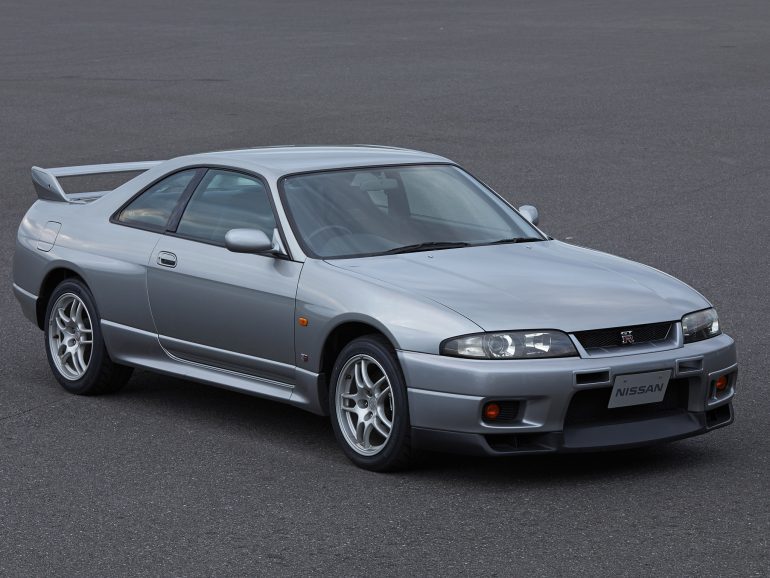
R33 Skyline GT-R
Model code: R33
Production: Jan 1995 – Nov 1998
Produced: 16,668 units
Designer: Kozo Watanabe
Body style: 2-door coupé and 4-door sedan
Layout: Front engine, AWD
Engine: 2.6 L twin-turbocharged RB26DETT Inline 6
Engine: 2.8 L twin-turbocharged RB-X GT2 Inline 6 (400R)
Transmission: 5-speed manual
Wheelbase: 2,720 mm (107.1 in)
Length: 4,675 mm (184.1 in)
Width: 1,780 mm (70.1 in)
Height: 1,360 mm (53.5 in)
Curb weight: 1,530 kg (3,373.1 lb)
Did You Know?
The R33 featured Nissan's Super HICAS, a four-wheel steering system aimed at making the larger car sharper in corners. It helped the R33 GT-R managed to snag a Nürburgring production car lap record, proving its performance was nothing to scoff at.
The Variants
GT-R (Series 1)
GT-R V·Spec (Series 1)
GT-R V·Spec N1
GT-R (Series 2)
GT-R V·Spec (Series 2)
GT-R (Series 3)
GT-R V·Spec (Series 3)
GT-R LM Limited
GT-R V·Spec LM Limited
Autech 40th Anniversary
N1 (Series 1)
N1 (Series 2)
N1 (Series 3)
UK V·Spec
Nismo 400R
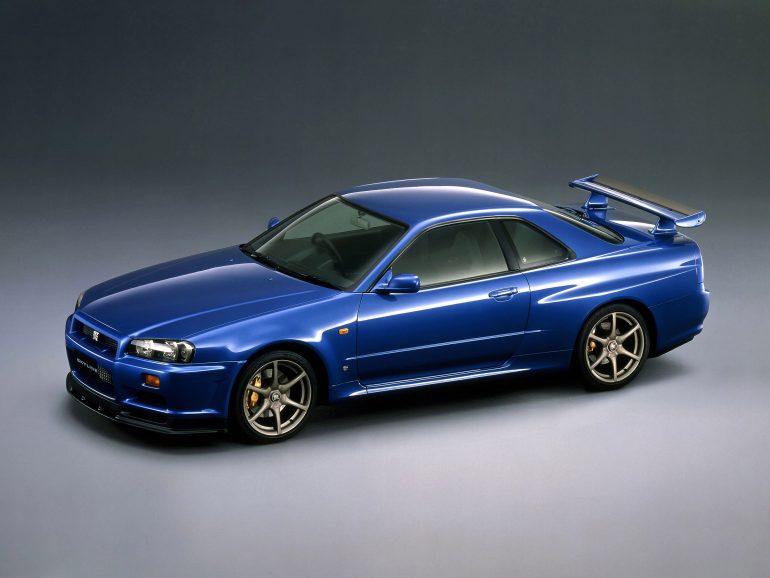
R34 Skyline GT-R
Model code: R34
Production: Jan 1999 – Aug 2002, 2003–2007 (Z-Tune)
Produced: 11,578 units
Designer: Kozo Watanabe
Body style: 2-door coupé
Layout: Front engine, AWD
Engine: 2.6 L twin-turbocharged RB26DETT Inline 6
Engine: 2.8 L twin-turbocharged RB28DETT Inline 6 (Z-Tune)
Transmission: 6-speed manual
Wheelbase: 2,665 mm (104.9 in)
Length: 4,600 mm (181.1 in)
Width: 1,785 mm (70.3 in)
Height: 1,360 mm (53.5 in)
Curb weight: 1,560 kg (3,439.2 lb)
Did You Know?
The R34 rose to fame as a hero car in the Gran Turismo franchise, becoming a dream ride for many gamers. It also starred in the Fast & Furious movies further cemented its status as a pop-culture icon.
Variants
GT-R (Series 1)
GT-R V·Spec
GT-R V·Spec N1
GT-R V·Spec UK
GT-R V·Spec Hong Kong
GT-R V·Spec New Zealand
GT-R V·Spec Singapore
GT-R (Series 2)
GT-R V·Spec II
GT-R V·Spec II Nür
GT-R V·Spec II N1
GT-R V·Spec II New Zealand
GT-R M·Spec
GT-R M·Spec Nür
GT-R Nismo Z-Tune
The Nissan Skyline GT-R R34 (1999 - 2002)
The R34 Skyline GT-R was introduced in 1998, and was available from 1998 to 2002. A technologically advanced display unit set the model apart, while it’s RB26DETT twin-turbo I6 engine produced impressive horsepower. The shorter wheelbase and more streamlined body of the R34 helped it to achieve even higher performance than its predecessors.
The R34 was a further evolution of the legend, taking the R33 and improving it in almost every way. The mechanicals were more of an evolution on ideas that were well-developed on the R33, but the outside was much braver step in the right direction. The R34 has a shorter, boxier silhouette that was reminiscent of the R32. The more angular looks immediately made it look more sinister than the R33. It also got a new interior and a tech screen that showed live engine data and telemetry – seriously high-tech for 1999. Weight was also kept to a minimal increase.
The R34 was to be the last hurrah for the beloved RB26 engine It was only fair that it received further enhancements for its send-off. The twin turbos made use of ball bearing architecture. This in turn improved reliability and decreased spool time. Overall, power now unofficially stood at 320hp, without harming the block’s bulletproof reputation. To go along with that extra oomph, Getrag developed a six-speed gearbox. This would replace the old five-speed manual transmission, while Brembo increased the size of the GT-R’s brake discs.
Overall, the R34 GT-R is slightly sharper to drive than the R33 with its more intelligent all-wheel-drive system. It's a really special-feeling car to drive, and huge horsepower levels via tuning are still very much on the menu. But expect to pay for the privilege; the R32 had a brief window of importability before prices shot up, but the R34 will have no such honeymoon period. There's more technology under the skin. The R34's ATTESA E-TS Pro is just what it sounds like: a next-level advance for the all-wheel-drive system. Not only can the on-board computers send power to the front wheels depending on wheelslip, but also manage power in the rear left-to-right via an active differential.
Naturally, more goodies came with the limited-edition variants. The V-Spec, for example, once again benefitted from ATESSA ETS-Pro’s electronic differential. They also came equipped with leather seats, stiffer suspension, and three more oil coolers. The ECU also featured reprogrammed settings. The stripped back N1 trim level made its return as well. On the other end of the spectrum, M-Spec introduced a more comfortable, laid-back persona to the GT-R.
The M-Spec was a tribute to Nissan's chief engineer. Kazutoshi Mizuno started out at Nissan in the 1970s and was eventually assigned to a subdivision selling wheelchair-accessible cars. Mizuno worked on the R33 Le Mans effort and would later be handpicked for the team that created the R35's exoskeleton of speed. Only 366 versions of the M-Spec were made, based on the V-Spec II model but without the carbon bonnet and with a special Silica Brass paint scheme. It also had gold stitching on the interior and modified Ripple Control suspension designed to be more comfortable on the road.
Another notable special edition was the GT-R Nür cars. Named after the famed Nürburgring circuit where the GT-R was developed, these 2002 models were made from V-Spec II and M-Spec models, and added upgraded N1 engines with reinforced internals, with exclusive Millennium Jade paint and gold engine covers.
However, as was the case with R33, the ultimate R34 was built by the likes of NISMO. Known as the Z-Tune, these 20 unicorns were all built atop converted donor cars. They featured a bigger 2.8-litre version of the RB26, while carbon fiber was also used in swathes to reduce weight. As such, the Z-Tune is the holy grail of all Skyline GT-Rs, let alone the R34.
The Nissan GT-R R35 (2007 - Present)
When the R35 Nissan GT-R first roared onto the scene it was clear that Nissan had once again redefined the possibilities of high-performance sports cars. Building on the legendary status of its predecessors, the R35 brought the GT-R nameplate into the modern era with groundbreaking technology, astonishing performance, and a level of accessibility that challenged the exclusivity of European sports car brands.
At the core of the R35's awe-inspiring performance is the VR38DETT engine, a 3.8-liter twin-turbocharged V6 marvel. This engine has been meticulously refined over the years, with its power output increasing from an initial 480 horsepower at launch to well over 600 horsepower in recent years.
What makes the VR38DETT truly special is not just its raw power but also its flexibility and durability. The engine's advanced design, featuring plasma-sprayed bores and a symmetrical independent intake and exhaust system, ensures efficient power delivery and remarkable reliability under high stress.
Since its debut, the R35 GT-R has enjoyed a production run that has spanned over a decade, a testament to its enduring appeal and Nissan's commitment to its evolution. Throughout its life cycle, the GT-R has seen numerous updates that have kept it competitive, including enhancements to its drivetrain, suspension, and aerodynamics. These incremental improvements have ensured that the GT-R remains a formidable force on both the road and track, continuously pushing the boundaries of what's possible in a sports car.
The R35 GT-R's long production run has been punctuated by the release of several special and limited editions, each with its unique flair and performance upgrades. Let's highlight a few:
GT-R NISMO: The NISMO variant stands at the pinnacle of GT-R performance, featuring engine upgrades that boost power, aerodynamic enhancements for better downforce, and a weight reduction strategy that includes extensive use of carbon fiber. The NISMO edition is a track-focused monster that encapsulates Nissan's motorsport heritage.
GT-R Black Edition: The Black Edition added a layer of exclusivity and sportiness, with unique black RAYS wheels, a carbon fiber rear spoiler, and a distinct red and black interior treatment. This edition offered a blend of performance and luxury, making it a coveted version among collectors.
GT-R 50th Anniversary Edition: Celebrating half a century of the GT-R legacy, the 50th Anniversary Edition paid homage to the GT-R's rich history with unique liveries, including a throwback to the iconic Bayside Blue, and special interior touches. It was a love letter to the GT-R's enduring legacy.
GT-R Track Edition: Engineered for enthusiasts who demand peak performance on the circuit, the Track Edition featured enhancements such as a unique suspension setup, special cooling upgrades, and an optional carbon fiber roof for reduced weight and lower center of gravity.
GT-R T-spec: The T-spec added luxury to performance, with exclusive colors, carbon-ceramic brakes, and a lavish interior. It's a testament to the GT-R's dual character as both a performance machine and a grand tourer.
The R35 Nissan GT-R is more than just a car; it's a chapter in the ongoing story of automotive excellence. Its engine prowess, coupled with a production run that has embraced continuous improvement and a plethora of special editions, has solidified its place in the pantheon of great sports cars. As we look to the future, the GT-R's legacy is a reminder of Nissan's innovation and the enduring appeal of a car that has captured the imaginations of drivers and enthusiasts around the world. The R35 may one day pass the baton to a new generation, but its impact will be felt for years to come, a benchmark against which the future of performance cars will be measured.
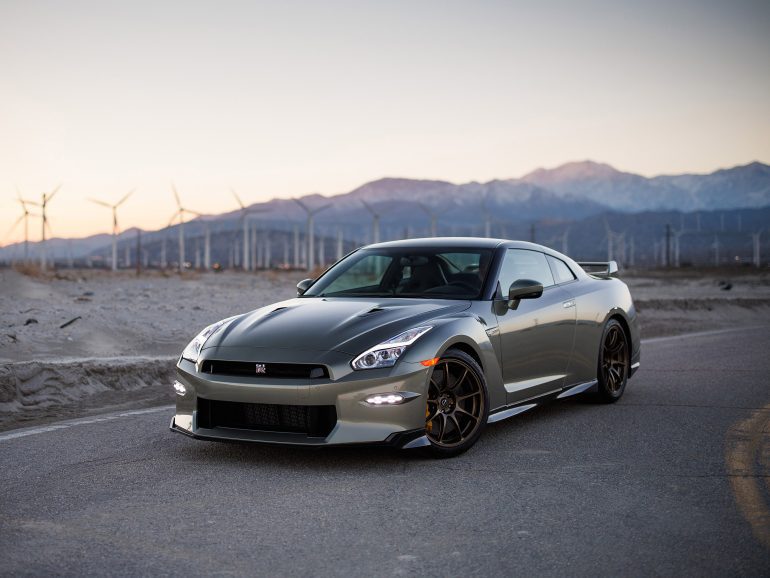
R35 Nissan GT-R
Model code: R35
Production: 2007 – Present
Model years: 2009 – Present
Assembly: Japan
Designer: Hiroshi Hasegawa
Body style: 2-door 2+2 seater coupé
Layout: Front-mid-engine, AWD
Platform: Nissan Premium Midship
Engine: 3.8 L twin-turbocharged VR38DETT V6
Power output: 473 hp - 710 hp (Depending on variant and year)
Transmission: 6-speed dual-clutch
Wheelbase: 2,780 mm (109.4 in)
Length: 2007–2009: 4,656 mm (183.3 in), 2010–2015: 4,671 mm (183.9 in), 2016–2022: 4,690 mm (184.65 in), 2023–present: 4,709 mm (185.4 in)
Width: 2007–2009, 2012–present: 1,895 mm (74.6 in), 2010–2011: 1,902 mm (74.9 in)
Height: 2007–2009, 2012–2015, 2023–present: 1,369 mm (53.9 in), 2010–2011, 2016–2022: 1,372 mm (54.0 in)
Kerb weight: 1,680 kg (3,704 lb) - 1,785 kg (3,935 lb) (Depending on variant and year)
Did You Know?
The R35 was the first GT-R to fully drop the Skyline name, signaling a shift in philosophy and a greater global focus. Also, did you know that each engine is assembled by a single highly skilled "Takumi" technician, ensuring precision and adding to the GT-R's mystique.
Variants
GT-R CBA–R35 (2007–2010)
GT-R DBA–R35 (2010–2012)
GT-R DBA–R35 (2012–2016)
GT-R 4BA–R35 (2016–present)
GT-R Black Edition
GT-R Track Edition
GT-R Track Edition (2020 MY Update)
GT-R Nismo
GT-R Nismo (2020 MY Update)
GT-R Nismo (2024 MY Update)
GT-R Nismo N-Attack Package
GT-R T-Spec
GT-R SpecV
GT-R Egoist
GT-R Gentleman Edition
GT-R Midnight Opal Special Edition
GT-R 45th Anniversary Gold Edition
GT-R50
GT-R Naomi Osaka Edition
GT-R 50th Anniversary Edition
GT-R Nismo Special Edition
GT-R Bolt Edition
GT-R/C
Nissan Skyline & Nissan GT-R Model List
The Nissan Skyline and its fire-breathing GT-R siblings have redefined speed and innovation for decades. From race-bred engineering to technological marvels, we're exploring every variant of these legendary machines.
Prince Skyline 1500 Deluxe (1965) (S50)
Prince Skyline 2000GT (1965) (S54B-2)
Nissan Skyline Van (1968) (VC10)
Nissan Skyline 2000GT-R (1969) (PGC10)
Nissan Skyline 2000GT-R (1969) (PGC10)
Nissan Skyline 2000GT-R (1972) (KPGC110)
Nissan Skyline H/T 2000GT-X (1972) (KGC10)
Nissan Skyline 1500GL (1971) (C10)
Nissan Skyline Hardtop 1500 Deluxe (1971) (KC10)
Nissan Skyline Hardtop 2000GT-R (1972) (KPGC10)
Nissan Skyline 2000GT-R (1973) (KPGC110)
Nissan Skyline 2000GT-R (1973) (KPGC110)
Nissan Skyline 2000GT (1974) (KGC110)
Nissan Skyline 2000GTX-E (1976) (KGC111)
Nissan Skyline 2000GT-EL (1979) (HGC211)
Nissan Skyline 2000GT (1980) (HGC211)
Nissan Skyline 2000GT-EL (1980) (HGC211)
Nissan Skyline H/T Turbo 2000GT-ES (1981)
Nissan Skyline 2000GT-E/X (1983) (HR30)
Nissan Skyline Super Silhouette (1983) (DR30)
Nissan Skyline 2000 Turbo RS (1983) (DR30)
Nissan Skyline Hatchback 2000GT-EX (1983) (RHR30)
Nissan Skyline 2000 Turbo RS (1983) (DR30)
Nissan Skyline 2000 Turbo RS Inter (1984) (DR30)
Nissan Skyline GT Passage Twin-cam (1985) (KRR31)
Nissan Skyline 4-door GTS Turbo (1986) (KRR31)
Nissan Skyline 2000GTS-R (1987) (KHR31)
Nissan Skyline GTS-X 24V Turbo (1987) (HR31)
Nissan Skyline GTS-R (1988) (HR31)
Nissan Skyline GT-R (1989) (BNR32)
Nissan Skyline GT-R Gr. A JTC Calsonic (1990) (BNR32)
Nissan Skyline GT-R (1991) (BNR32)
Nissan Skyline GT-R Gr. A Spa 24 spec. (1991) (BNR32)
Nissan Skyline GT-R (1992) (BNR32)
Nissan Skyline GT-R (1993) (BCNR33)
Nissan Skyline GT-R Nürburgring (1993) (BCNR33)
Nissan Skyline GT-R Gr. (1993) (BNR32)
Nissan Skyline GTS25 Type X-G (1993) (ECR32)
Nissan NISMO GT-R LM Le Mans 24 (1995) (BCNR33)
Nissan NISMO GT-R LM Road Car (1995) (BCNR33)
Nissan NISMO GT-R LM Le Mans 24 (1996) (BCNR33)
Nissan Skyline GT-R V-spec (1997) (BCNR33)
Nissan Skyline GTS25t Type M (1997) (ECR33)
Nissan Skyline GT-R (1998) (BCNR33)
Nissan Skyline GT-R Autech Version 40th (1998) (BCNR33)
Nissan Skyline GT-R (1999) (BNR34)
Nissan Skyline GT-R (2000) (BNR34)
Nissan Skyline GT-R V·spec II (2000) (BNR34)
Nissan Skyline GT-R M·spec Nür (2002) (BNR34)
Nissan Skyline GT-R (2002) (BNR34)
Nissan GT-R (2007) (R35)
Nissan GT-R (2008) (R35)
Nissan GT-R (2009) (R35)
Nissan GT-R (2010) (R35)
Nissan GT-R (Facelift) (2011) (R35)
Nissan GT-R Bolt Special (2012) (R35)
Nissan GT-R Premium Edition (2012) (R35)
Nissan GT-R Black Edition (2012) (R35)
Nissan GT-R Premium Edition (2013) (R35)
Nissan GT-R Black Edition (2013) (R35)
Nissan GT-R NISMO N-Attack (2013) (R35)
Nissan GT-R Premium Edition (2014) (R35)
Nissan GT-R Black Edition (2014) (R35)
Nissan GT-R Track Edition (2014) (R35)
Nissan GT-R Premium Edition (2015) (R35)
Nissan GT-R Black Edition (2015) (R35)
Nissan GT-R Track Edition (2015) (R35)
Nissan GT-R NISMO (2015) (R35)
Nissan GT-R Premium (Facelift) (2016) (R35)
Nissan GT-R Black Edition (Facelift) (2016) (R35)
Nissan GT-R NISMO (Facelift) (2016) (R35)
Nissan GT-R Premium (2017) (R35)
Nissan GT-R NISMO (2017) (R35)
Nissan GT-R Track Edition (2017) (R35)
Nissan GT-R Pure (2018) (R35)
Nissan GT-R Premium (2018) (R35)
Nissan GT-R Track Edition (2018) (R35)
Nissan GT-R NISMO (2018) (R35)
Nissan GT-R Pure (2019) (R35)
Nissan GT-R Premium (2019) (R35)
Nissan GT-R Track Edition (2019) (R35)
Nissan GT-R NISMO (2019) (R35)
Nissan GT-R Premium (2020) (R35)
Nissan GT-R Track Edition (2020) (R35)
Nissan GT-R NISMO (2020) (R35)
Nissan GT-R Premium (2021) (R35)
Nissan GT-R NISMO (2021) (R35)
Nissan GT-R NISMO Special Edition (2022)(R35)
Nissan GT-R Premium (2023)(R35)
Nissan GT-R NISMO (2023)(R35)
"What you get with this [Nissan GT-R] is supercar performance for half the price of anything else... it's that good."
Jeremy Clarkson (Top Gear)


